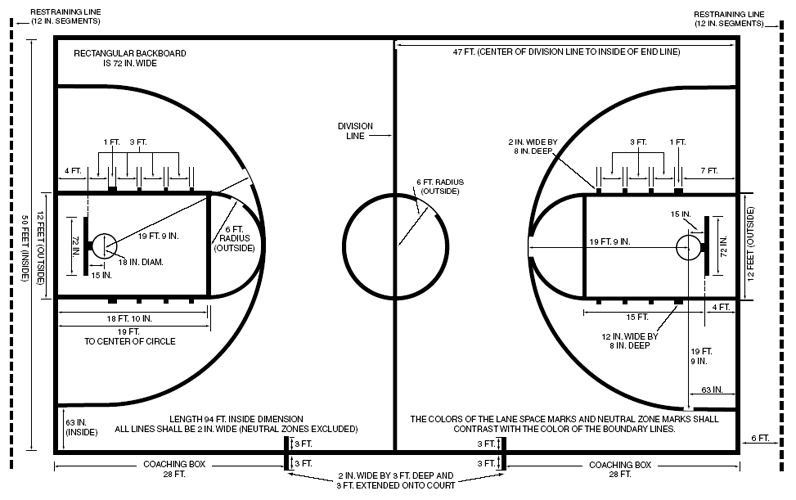Home »
Misc »
How big is a full basketball court
How big is a full basketball court
Basketball Court Dimensions, Gym Size, Hoop Height
Basketball court dimensions and size vary based on the level of play. To help explain the various sizes, we’ve created a chart and diagrams that should help you. And we’ve organized the material into a helpful Q & A format.
What is a basketball court size?
Well, it depends on each court you measure — but there are some standards. The age of the players who will be the primary users and budgets are considerations for court builders.
Basketball Court Dimensions
Regulation basketball court dimensions are 94 feet long by 50 feet wide.
Basketball court size varies depending on the league and level of play. The court measures 94 feet long by 50 feet wide for NBA court dimensions and WNBA and college. Note the paint area – the free throw lane – is 16 feet across. The foul line is 15 feet from the face of the backboard and 2 inches wide.
International Basketball Federation (FIBA) and Olympic basketball courts call for the court to be slightly smaller at 91.![]() 9 feet by 49.2 feet. In meters, that’s 28 by 15 meters.
9 feet by 49.2 feet. In meters, that’s 28 by 15 meters.
NBA Court Dimensions Diagram
High school basketball court dimensions
The high school and junior high basketball gym courts measure 84 feet long by 50 feet wide. Court markings reflect those dimensions.
You might like Kawhi Leonard Profile.
High School Basketball Court Diagram
At a younger level of play than college or pro, the court length is 10 feet shorter at 84 feet.
Read all about Larry Bird: Boston Celtic, Star Shooter (and Trash Talker)
How long is a basketball court?
So, what are court dimensions in feet? The high school court is 84 feet long. The length of an NBA court is exactly 10 feet longer. College and professional league games, including the WNBA, are played on a 94-foot-long court.
One of the most famous college facilities is Pauley Pavilion, where the UCLA Bruins play.
Visit: Stephen A. Smith Profile.
College Basketball Court Diagram
What are court dimensions in meters?
The metric size of a professional court is 28.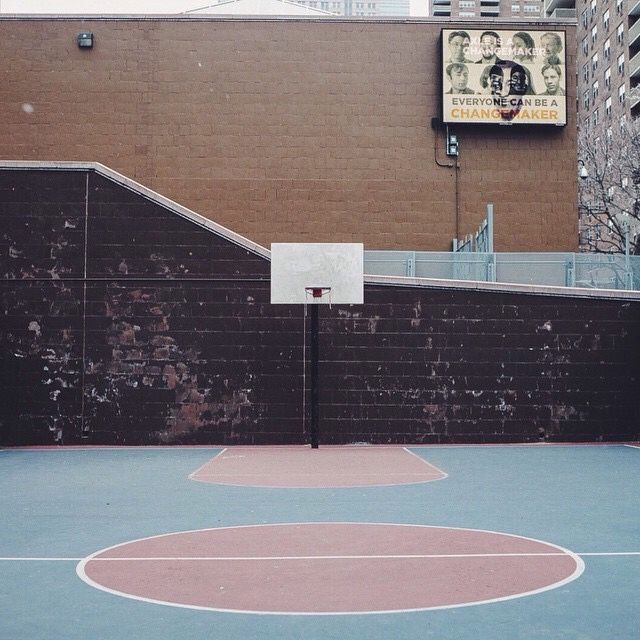 65 meters long by 15.24 meters wide. The high school court measures 25.6 meters long.
65 meters long by 15.24 meters wide. The high school court measures 25.6 meters long.
What are half-court dimensions?
Half-court dimensions are 47 feet long for the pros and 42 feet long for high school.
See Basketball Roles and Responsibilities of Each Position.
What are the half-court dimensions for a backyard?
Youth half-court dimensions are usually 42 feet long by 37 feet wide. High school half courts are slightly larger, 50 feet long by 42 feet wide.
Check out Ben Simmons Profile.
What are backyard court dimensions?
Backyard courts can be whatever size you wish (or can fit), but typically they are 90 feet long by 50 feet wide.
What are youth court dimensions – Middle School and High school?
The middle school court size is 74 feet long by 42 feet wide. High school courts are slightly larger, at 84 feet long by 50 feet wide.
Looking for a basketball court in your area to play? Check out The Original Basketball Court Finder.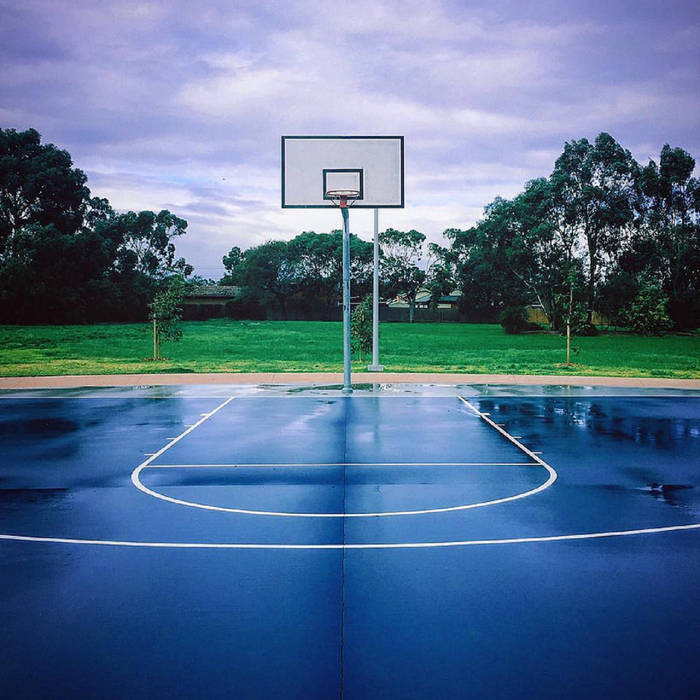
Basketball Hoop Height and Size
It’s critical that you set the goal at the proper height. Here are your guidelines.
See How many teams make the NBA playoffs?
What is the regulation basketball rim height? How tall is a hoop?
The distance from the gym floor to the rim is 10 feet. This rim height is the same for Junior High, High School, NCAA, WNBA, FIBA, and the NBA. Some kids’ leagues will lower the hoop to 8 feet or 9 feet to acknowledge that younger kids have difficulty shooting at ten feet-high hoops.
You might like Jumbotron Dancer Entertains Celtics’ Crowd.
How wide is an NBA basketball hoop? What is the NBA rim size?
The rim size is the same for all game levels – junior high, high school, NCAA, WNBA, NBA, and FIBA – at 18 inches in diameter.
Basketball Free Throw and 3-Point Distance
Read the guidelines below carefully, as the three-point distance varies by player.
What is the free-throw line distance? How far is the free-throw line?
The free-throw line is measured from the shooting line that intersects the key to the floor directly underneath the backboard.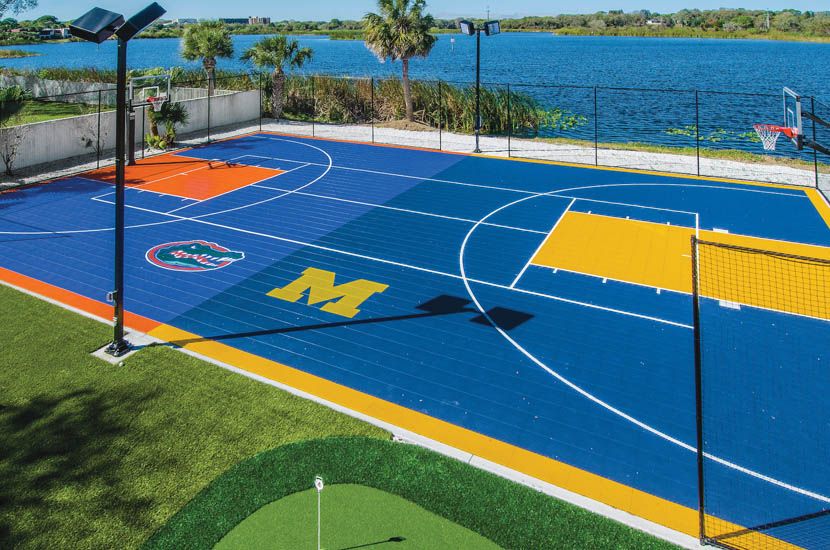 The free throw distance in the NBA, WNBA, and NCAA is 15 feet.
The free throw distance in the NBA, WNBA, and NCAA is 15 feet.
Did you know that Steve Nash was the best percentage shooter of free throws in the NBA? He shot 90.43% from the line making 3,060 of 3,384 attempts.
What is the high school 3-point line distance?
The 3-point line for high school is 19.9 feet from the basket.
What is the college 3-point line distance?
The 3-point line for both NCAA men and women is set at 20 feet, 9 inches from the hoop.
What is the WNBA 3-point line distance?
The WNBA 3-point line is 22.15 feet from the basket. From the corners, the distance is 21.65 feet.
What is the NBA 3-point line distance?
The pros shoot 3-pointers from beyond the arc, 23.75 feet from the basket. From the corners, the distance is 22 feet.
Check out Basketball Slang
Size of the Basketball
Matching the size of the basketball to players’ hand size makes a difference.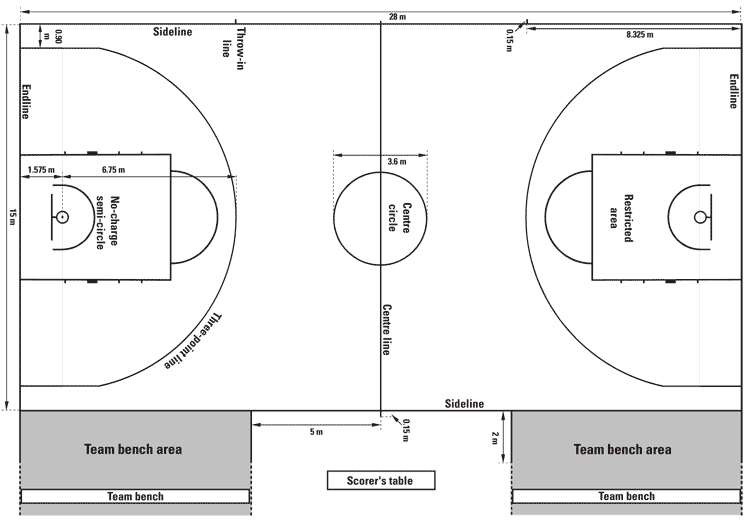 Read on.
Read on.
What is the ball diameter and circumference?
The size of the ball is different for men’s, women’s, and youth leagues.
For the NBA, men’s college, and boys ages 15 and up, players play with a 9.43-9.51 inch diameter (the width measured left to right) basketball. The ball’s circumference (the distance measured around the outside) is 29.5 inches. The official NBA game ball is made by Spalding and measures 9.43-9.51 inches in diameter, or 29.5 inches (75cm) in circumference.
NCAA women and the WNBA use a slightly smaller ball with a roughly 9.07-9.23 inch diameter and 28.5-inch circumference.
The ball used in boys’ youth leagues has a 28.5-inch circumference. Girls’ youth basketballs are 27.5 inches in circumference. Kids 5 to 8 years old use the smallest ball at 25.5 inches in circumference.
Backboard, Baseline, and Key
The backboard is four feet out from the baseline, marking the end of the players’ active playing surface.
The key is 16 feet wide and 19 feet from the foul line to the baseline.
Inside the key, a four-foot arc is designated to align with the center of the basket to mark the restricted arc. If a defender is within this arc, they cannot draw a charging foul.
Regulation backboards are six feet wide and 42 inches tall.
Free throw markings
Short lines are drawn three feet apart along both sides of the key area to designate the standing positions for rebounders when a free throw is being shot. The first line is drawn seven feet from the baseline.
A six-foot arc (half circle) starting from the free-throw line away from the basket completes the key area.
Core components of basketball courts
Baskets, free-throw lines, three-point arcs, and the half-court line are some of basketball courts’ foundational elements. Court lines mark 94 feet in length by 50 feet in width for NBA courts. The half-court line is at 47 feet. Indoor courts are frequently made of hardwood-like polished maple. Outdoor courts may be composed of asphalt, concrete, or other pavements.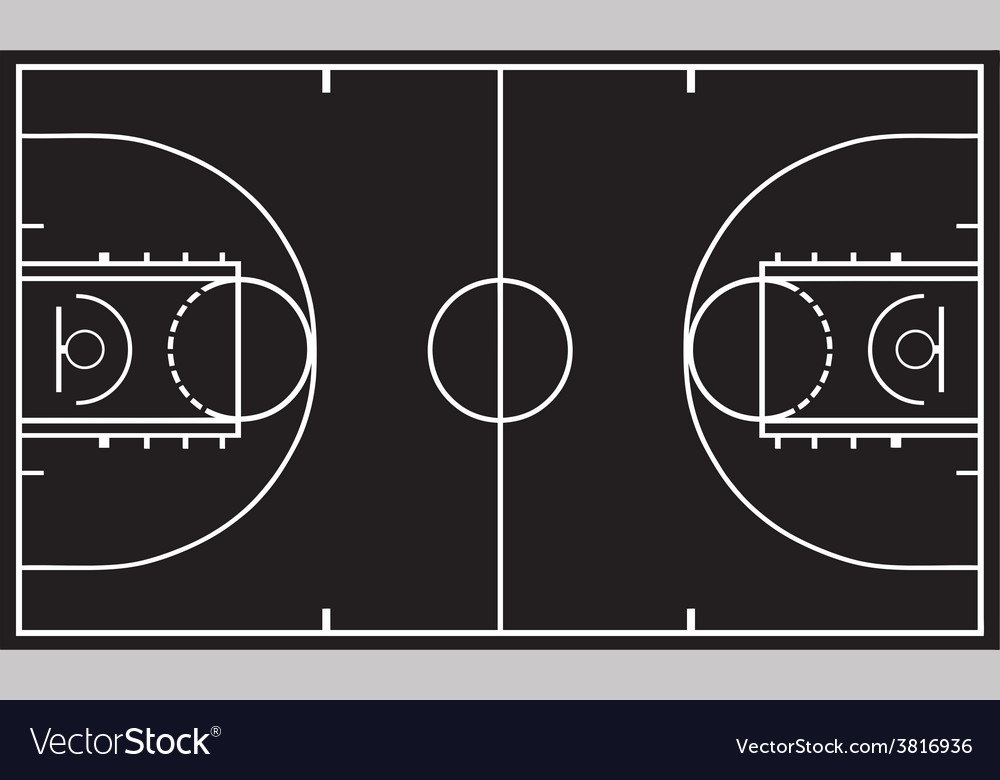
The words baseline and end line both refer to the ends of the court running behind the goals.
In the middle of the half-court line is a tip-off circle that has a six-foot radius. This is where the opening jump ball takes place.
The backcourt refers to the half of the court where the team’s basket is defended. The boundary lines include their end line, sidelines, and the half-court line of the playing court.
For international play, the standard court size is 28m long and 15m wide, measured from the inner edge of the boundary line.
The 3-Point line
The NBA 3-point arc is 22 feet to the center of the rim. Women’s and Men’s college basketball court features a 3-point arc of 20 feet 9 inches. High school basketball courts have a 3-point arc that is 19 feet 9 inches away from the center of the rim.
Great Basketball Courts Everyone Should See
Rucker Park in Harlem, New York. Where street legends go to make their name. Home of Kareem Abdul Jabaar, Nate Archibald, and Connie Hawkins. Even Kevin Durant and Kobe Bryant have made appearances.
Even Kevin Durant and Kobe Bryant have made appearances.
United Center, Chicago, Illinois. Michael Jordan won 6 NBA titles while calling this his home court.
Hoosiers Gym in Knightstown, Indiana. Gene Hackman + Dennis Hopper + Picket Fence = the best basketball movie ever.
Pauley Pavilion in Los Angeles, California. Home to the UCLA Bruins and John Wooden’s greatest college hoops dynasty.
Madison Square Garden, Manhattan, New York. Home of the Knicks with a household name that needs no introductions.
The Staples Center in Los Angeles, California. One word: “Showtime!”
The Swim Gym, Beverly Hills High School in Los Angeles. Remember “It’s a Wonderful Life” and the retractable gym floor? This is the place. Built in 1939, a 25-yard pool was placed under the gym floor. It’s a Wonderful Life was a 1946 movie.
Timing of a Game
Here are the total game times for basketball games for each level of play. Remember that time-outs, TV breaks, half time, and other play stoppages will draw out the real-time of a game 2 to 3 times longer than the timed play.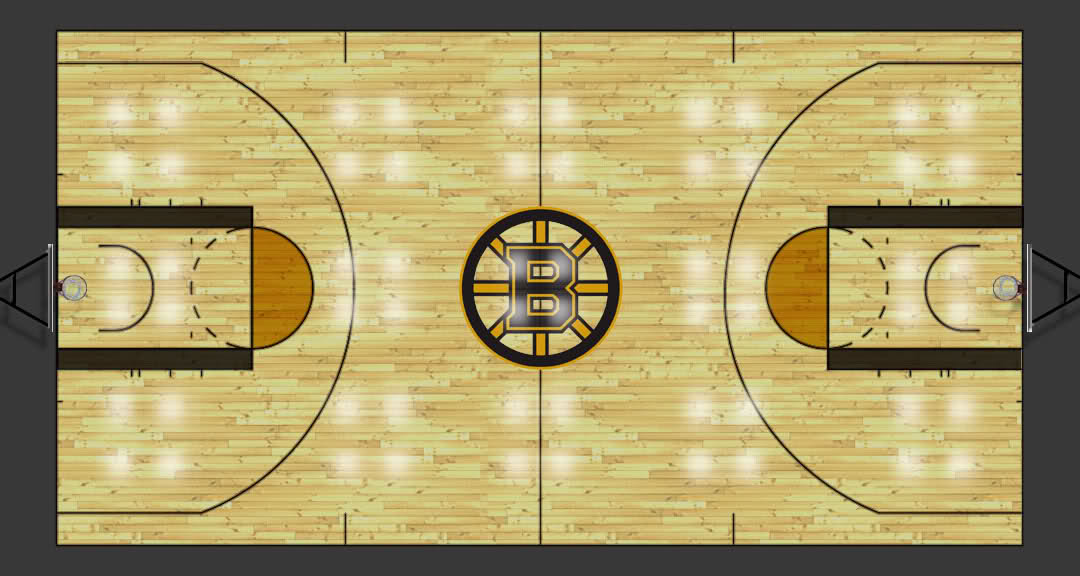
How long is a high school game?
High school basketball games consist of four 8-minute quarters for 32 minutes of game time.
Length of college basketball game?
In the NCAA, college games consist of two 20-minute halves for 40 minutes of game time.
How long is a WNBA basketball game?
WNBA basketball games consist of four 10-minute quarters for 40 minutes of game time.
Length of an NBA basketball game?
NBA games consist of four 12-minute quarters for 48 minutes of game time.
How long is the shot clock?
The shot clock requires offenses to shoot before a timed period runs out. If a shot is not made during that period, a shot clock violation is called, and the ball is turned over to the opposing team.
In high school games, the shot clock varies. For men’s college hoops, the shot clock is 35 seconds, and for women’s college is 30 seconds.
The WNBA shot clock is 30 seconds, while the NBA limits the shot clock to only 24 seconds.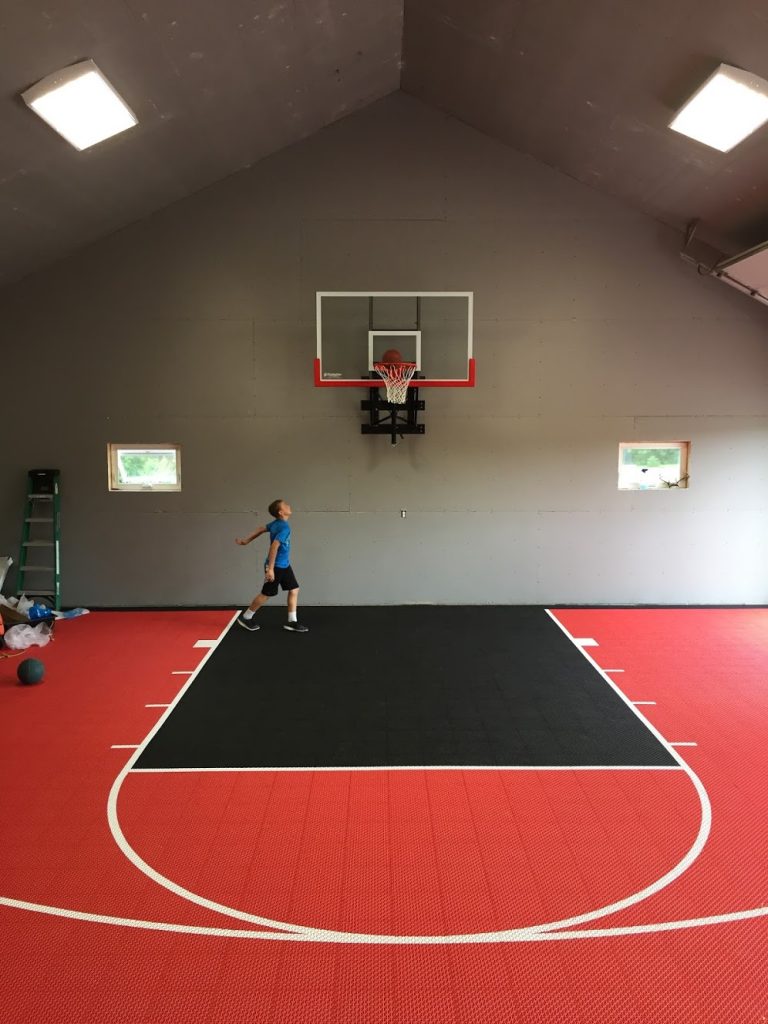
Basketball Court Fun Facts
Do you know everything about hoops courts? Try answering these trivia questions.
1.) What type of wood is used for NBA courts?
Maple is selected for its hardness and light color. The lightness helps provide contrast to the ball to follow the action in person and on TV. The lighter color reflects light better, too.
2.) How often does the NBA require teams to replace the floors in arenas?
Every ten years. But, sometimes, a team receives a waiver if the floor is still in great shape.
3.) What three NBA teams were ranked the highest in appearance by the Chicago Tribune?
Charlotte Hornets, Brooklyn Nets, and the Boston Celtics floors were ranked the highest by a panel selected by the newspaper.
By Greg Johnson & Mike O’Halloran
Greg is a designer and writer based in Minneapolis, Minnesota. Mike has authored three books on basketball coaching and has coached ten different teams.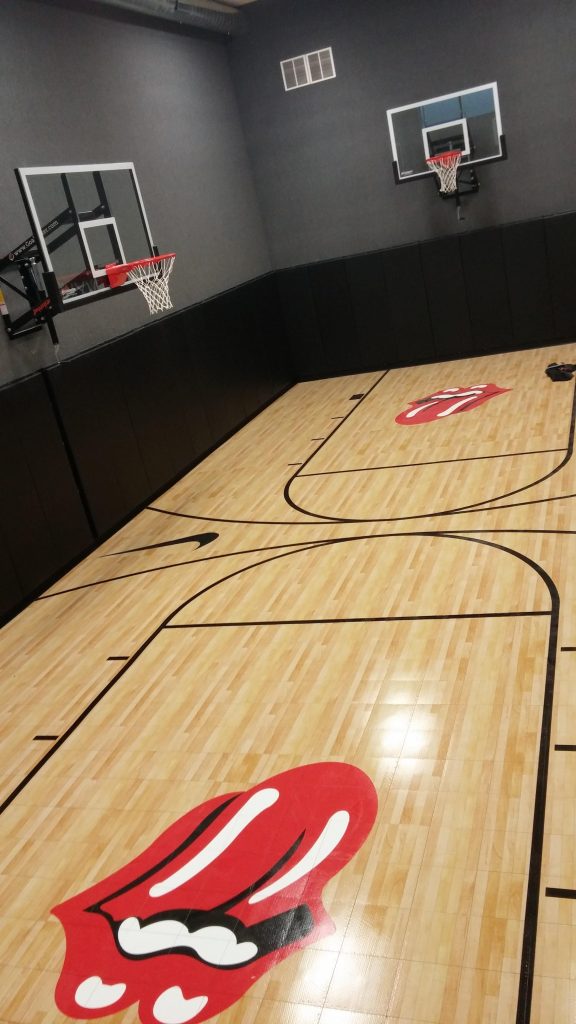
You’re on our Basketball Court Dimensions page.
Further Reading
Hoops Quotes
Slogans
NBA Players By The Numbers: Wingspans, Verticals, Hand Sizes
Fun Basketball Games For Kids to Improve Shooting
Everything You Need to Know About Basketball Court Dimensions
Of the two major American-invented sports — baseball and basketball — only one has gained worldwide popularity. We play baseball across parts of the globe, but we play basketball worldwide. You can play with as few as two people and as many as ten. Shoot hoops indoors and outdoors and on any surface hard or flat enough to bounce a ball.
Indoor courts are usually made from hardwood, though other, more easily-maintained surfaces are gaining in popularity. Outdoor courts can be either asphalt or concrete. You can put a permanent basketball court just about anywhere you would like. Don’t have the room for a full-length court? Fitting just a half court into your driveway, backyard, or commercial gym would be just as useful.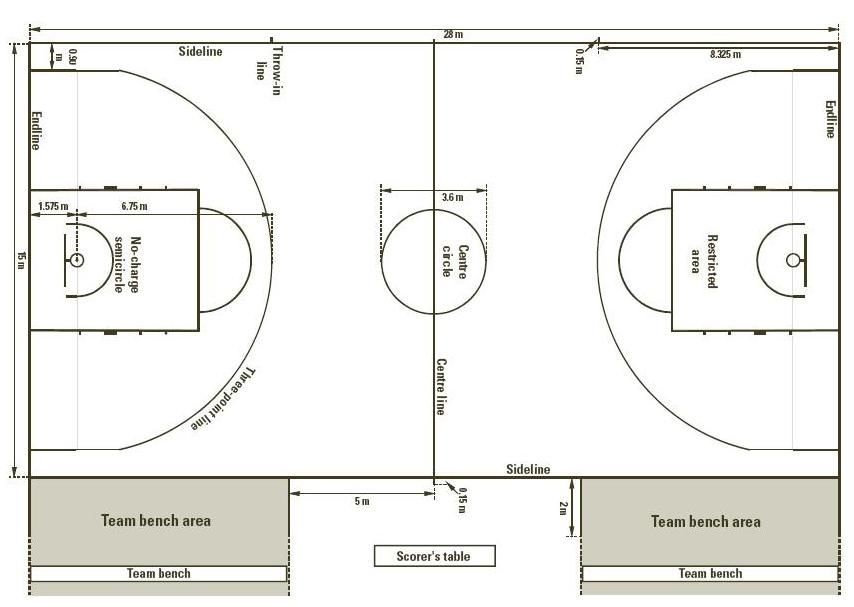
So, have a space in mind and wondering “What are the dimensions of a basketball court?” Let’s take a look at the standard sizes for every level of basketball, from high school all the way up through international competition.
NBA Basketball Court DimensionsThe National Basketball Association, better known as the NBA, boasts the largest court dimensions of any level of basketball — domestic or international. The outer dimensions are 94 feet long by 50 feet wide. The half court line is, as the name would suggest, halfway between each end line. In the middle of the half court line is a tip-off circle with a six-foot radius, which often sports the home team’s logo.
The key is 16 feet wide and 19 feet from the baseline to the foul line. A semicircle with a six-foot radius extends from the foul line. Some courts have the other side of the half-circle drawn in a dotted line inside the key to complete the circle and create a clear boundary for any jump balls.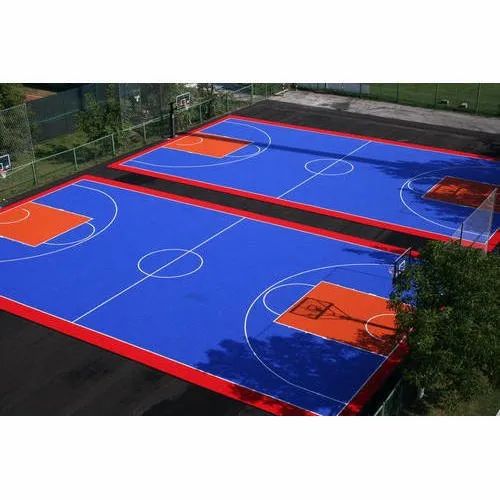
The backboard protrudes four feet out from the baseline, and the rim of the basket hangs 10 feet off the ground. Subtracting the four feet overhang from the 19-foot length of the key, we get the familiar 15-foot distance from the foul line to the front of the backboard. It’s a misconception that the foul line is 15 feet from the center of the basket. The backboard itself measures six feet wide and 42 inches high.
Inside the key, a four-foot arc is aligned with the center of the basket to designate the restricted arc. If a defender is inside this semicircle, he cannot draw a charging foul. Along both sides of the key, lines are drawn three feet apart to create the standing positions for other players during a free throw attempt, starting with a box that is seven feet from the baseline and one foot wide.
Outside the key, the three-point line forms an imperfect arc stretching one side of the baseline to the other. The arc isn’t a perfect circle because it would run out of bounds on the sides of the court.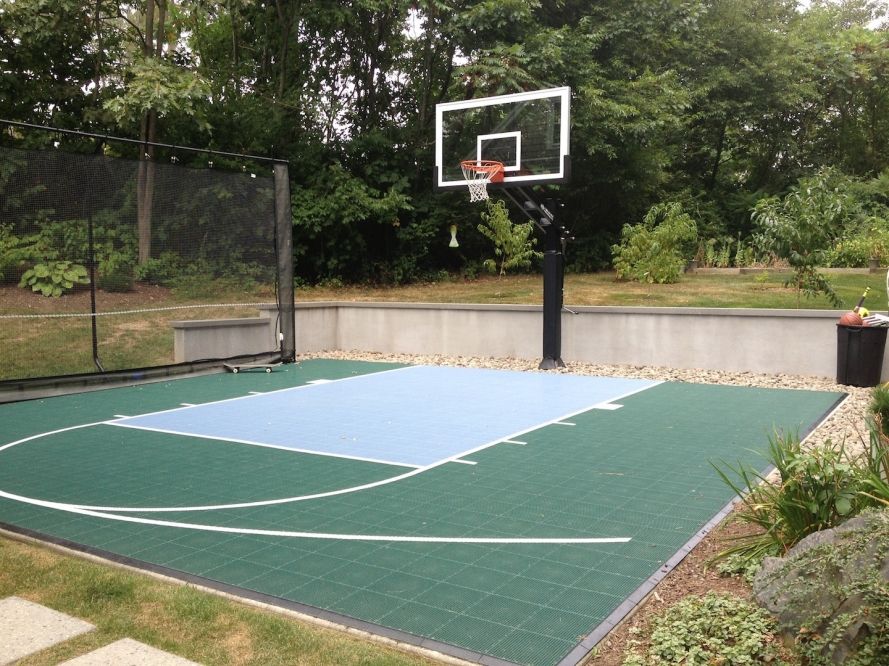
Instead, the three-point line runs in a straight line from the baseline out 16 feet, nine inches, at which point the line begins to curve. The straight lines are an even 22 feet from the center of the basket, and on the arc, the distance is 23 feet and nine inches.
Starting at the baseline and running 28 feet toward the center of the court, a line bounds the team bench area. The line also acts as the starting place for inbounds passes after timeouts and fouls.
WNBA Basketball Court DimensionsThe Women’s National Basketball Association or WNBA’s court dimensions are identical to the NBA court in every way except the three-point line. Instead, the distance is equal to the International Basketball Federation (FIBA) at 22.15 feet from the center of the hoop. WNBA teams share arenas and playing surfaces with the NBA, which is why it’s no wonder the court dimensions are so similar.
NCAA Basketball Court DimensionsNational Collegiate Athletic Association or NCAA basketball courts have similar dimensions to the NBA and WNBA, which include the:
- Court
- Foul line
- Backboard
- Basket height
- Tip-off circle
That said, there are a few significant differences in the dimensions of the NCAA court.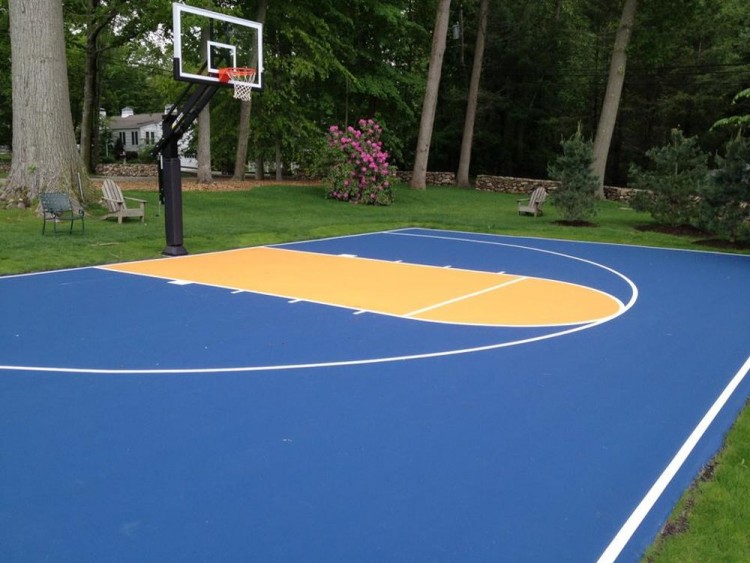 For starters, the key is only 12 feet wide, rather than 16. The first box on the side of the key is only six feet from the baseline, not seven. The restricted area under the basket is also one foot smaller, at three feet in diameter rather than the NBA’s four.
For starters, the key is only 12 feet wide, rather than 16. The first box on the side of the key is only six feet from the baseline, not seven. The restricted area under the basket is also one foot smaller, at three feet in diameter rather than the NBA’s four.
However, the most recognizable difference between the NBA’s court dimensions and the NCAA’s is the distance of the three-point line. The NCAA three-point line is only 20 feet, nine inches from the center of the basket. Because of the smaller diameter, it is a continuous arc from one side of the baseline to the other, with no straight lines necessary to create space on the sidelines.
The difference in three-point line distances is the biggest adjustment for shooters to make as they begin their professional careers, and also why it’s so difficult to project how well a player will shoot in the pros.
High School Basketball Court DimensionsHigh school basketball courts are a little different from their college and professional counterparts.![]() The most noticeable difference is that the court is a full 10 feet shorter, measuring only 84 feet. However, there are some similarities. The court is still 50 feet wide. The basket is also 10 feet off the ground.
The most noticeable difference is that the court is a full 10 feet shorter, measuring only 84 feet. However, there are some similarities. The court is still 50 feet wide. The basket is also 10 feet off the ground.
The tip-off circle has a six-foot radius, just like the big kid courts, and while the high school landscape isn’t as standardized as college and professional basketball, the backboard is supposed to have the same measurements as the NCAA and NBA.
Just as in college and professional basketball, the foul line is 15 feet from the backboard, and the key is 19 feet long. It’s also the same 12 feet wide as the NCAA — four feet narrower than the NBA and WNBA.
The other visible difference is the distance from the three-point line. Shorter than either the NCAA or NBA, the high school free throw line is just 19 feet, nine inches from the center of the basket. Additionally, high school basketball courts do not have any restricted area under the basket, since that rule doesn’t exist in high school basketball.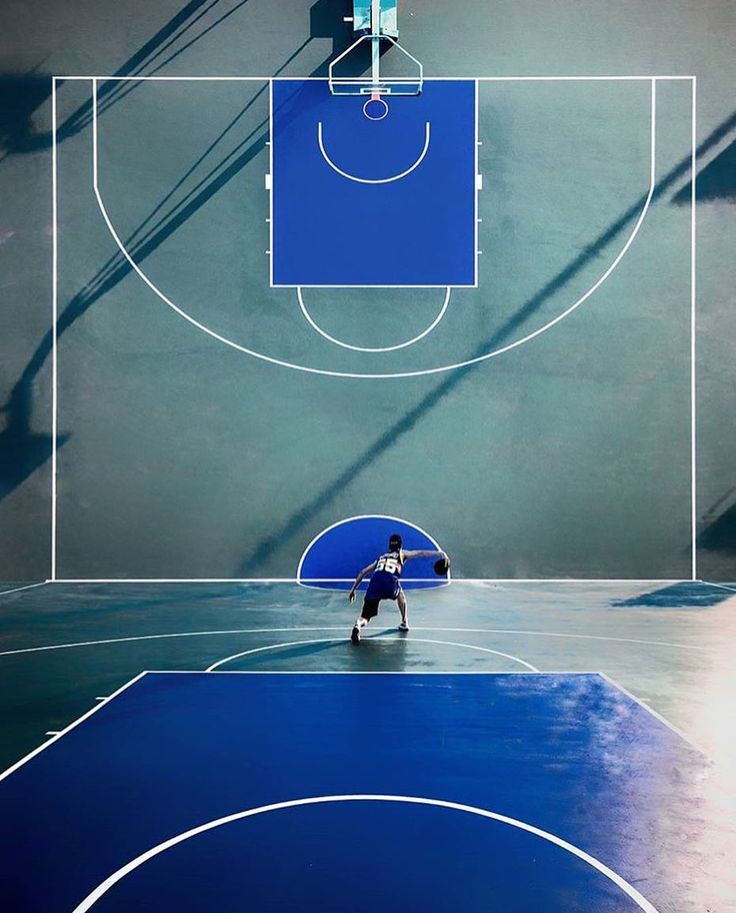
FIBA Basketball Court DimensionsFIBA governs international basketball courts. The measurements for FIBA basketball courts differ from U.S. courts because of the difference between our Imperial measurements — feet and inches — and the more standard metric system.
FIBA courts are an even 28 meters long, which converts to almost 92 feet. The 15-meter width converts to just over 49 feet. The tip-off circle is a bit smaller as well, at 3.5 meters in diameter. This difference translates to a radius of about five feet, seven inches.
The key is almost the same size at 5.8 meters long and 4.8 meters wide. These numbers convert to within a few inches of 19 and 16 feet. The basket is 1.2 meters, or almost four feet, in from the baseline, which puts the foul line at 4.6 meters — 15 feet — away. The restricted area under the basket is 1.25 meters or just a shade more than four feet in radius.
The basket is still 10 feet off the ground, which means the biggest difference is the three-point line.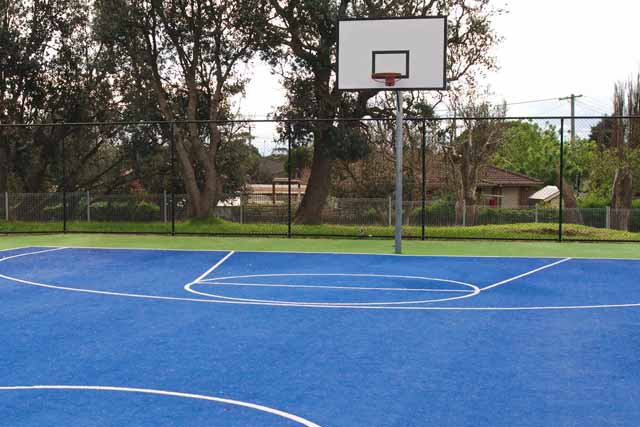 At the top of the arc, the three-point line is 6.75 meters from the center of the basket or 22.15 feet. This measurement works out to about 22 feet, two inches. The FIBA three-point line, which has also been adopted by the WNBA, is over a foot and a half closer than the NBA line.
At the top of the arc, the three-point line is 6.75 meters from the center of the basket or 22.15 feet. This measurement works out to about 22 feet, two inches. The FIBA three-point line, which has also been adopted by the WNBA, is over a foot and a half closer than the NBA line.
The History of Basketball Court DimensionsSince its invention in 1891, basketball’s court dimensions have varied. Let’s look at some of its historical changes, as well as answering that nagging question — “Why are basketball hoops 10 feet high?” — below:
The Story Behind the 10-Foot High Hoop
It would appear the 10-foot basketball hoop is the result of a careful calculation that considers the human anatomy and mechanics of the game. After all, even the tallest players today have to jump to dunk a ball, and a ten-foot high rim gives a comfortable target to shoot for at a distance. But as we see so often in history, the truth is much more mundane.
When James Naismith dreamed up the game in Springfield, MA in 1891, the railing he chose to hang the baskets on was ten feet off the ground.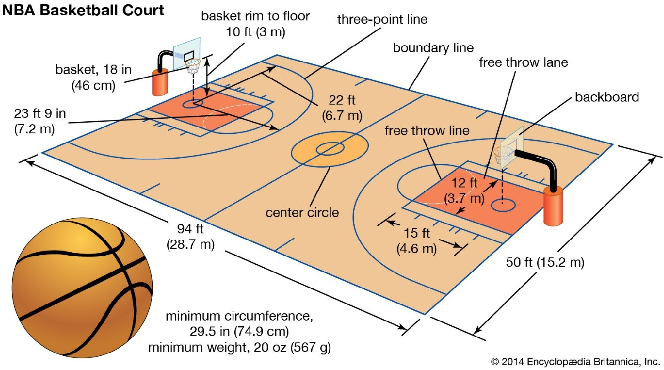 So, while everything else about the sport has changed since that first game, the baskets are still right where Dr. Naismith hung them.
So, while everything else about the sport has changed since that first game, the baskets are still right where Dr. Naismith hung them.
The History of the Three-Point Line
The three-point line is arguably the most recognizable aspect of a basketball court’s dimensions and part of the reason why is attributed to the history surrounding this semicircle.
The first instance of the three-point line appeared in the American Basketball League in 1961, a full 70 years after Dr. Naismith invented the game. The line was added to increase excitement, but the league folded in just one and a half seasons, so the idea never had a chance.
In 1967, the next competitor to the NBA arrived. The American Basketball Association, or ABA, instituted the three-point line from the very start, and it was a huge success. The ABA had many exciting innovations that produced a better product for the fans. But ultimately, there was not enough room for two professional basketball organizations, so the NBA and ABA merged in 1976.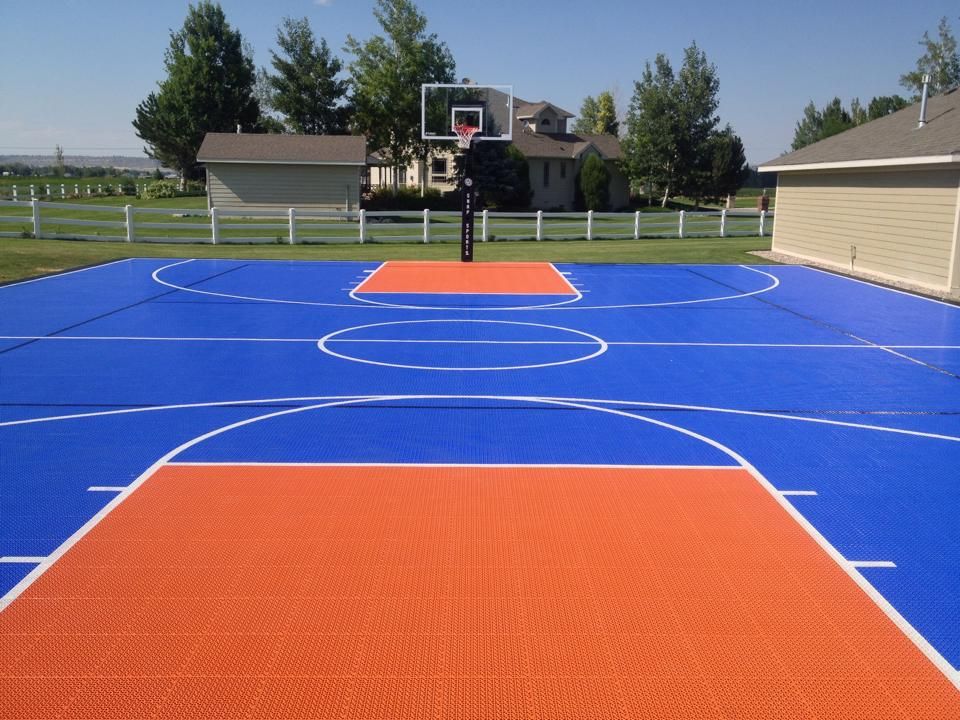
The three-point line, however, was not included in the merger! The decision-makers in the NBA at the time were too stubborn to adopt such a radical change. They held out for three years before implementing the three-point line in the 1979-1980 season. The NCAA didn’t integrate it until 1986, and it didn’t arrive on high school basketball courts until 1987.
That isn’t the end of the story, however. The line was moved closer for three seasons in the ‘90s to try to boost scoring, but it was quickly moved back to its original place. Taking the idea to the extreme, the NBA has even admitted to having discussions about a four-point line. Ultimately, we’ll believe it when we see it.
The Original Cage Matches
In the early days of professional basketball, the game was played inside an actual cage. The reasons were more about practicality than about safety. The rule for who got to inbound a ball that left the court was “whoever got to it first,” so organizers took to putting up a cage so the ball could never go out of bounds in the first place.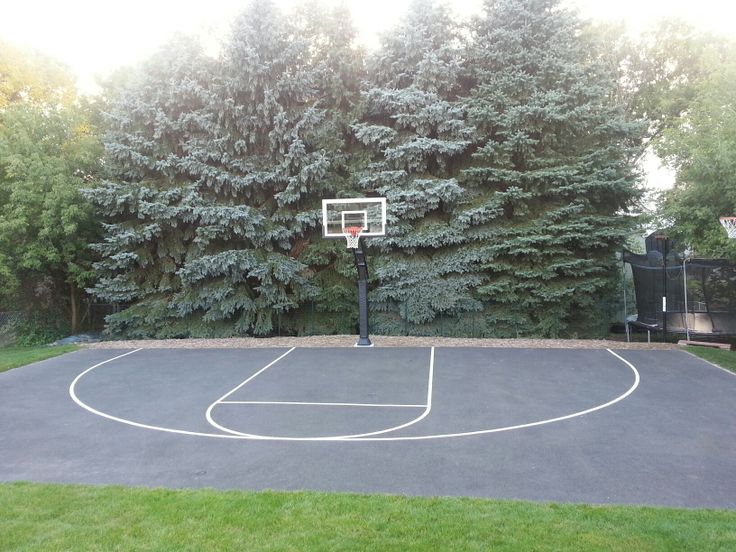
Those first basketball courts were about a third smaller than they are today, and the cages provided a physical boundary and an extra immovable for savvy teams. Could you imagine how much different the game of basketball would be today if those cages had stuck around?
The Alternative Key Designs
Today, basketball courts at all levels share a common design for the key — a rectangle measuring either 19 feet by 16 feet or 19 feet by 12 feet. However, this was not always the case. From the creation of FIBA in 1956 until 2010, the key was a trapezoidal design that was significantly wider at the baseline.
Another design of this feature is responsible for the name “key.” Have you ever thought about how a rectangular area under a basket got such a random name?
The reason is that the original area was much narrower, while the circle surrounding the free throw line was the same size. These two factors combined to create a shape that resembled an old-fashioned key. In 1951, the key was widened to 12 feet and later to the 16 feet we see now in the NBA and FIBA.
In 1951, the key was widened to 12 feet and later to the 16 feet we see now in the NBA and FIBA.
While the term lives on, time has erased any record of its design and original reference. And for the record, the official name for this feature is “free throw lane,” which isn’t a phrase many of us hear often.
And that’s a wrap on the history of basketball’s court dimensions.
Build Your Basketball Court With PROformancePerhaps you don’t have 94 feet of flat asphalt or indoor floor space. Don’t worry, because residential half court setups can be just as fun. And whether you are looking to paint your court or apply a pre-made solution, sticking to the official dimensions will take your pickup games to the next level.
Take a look at our selection of goals, nets and accessories to bring your home’s court together. You’ll have a hard time dragging your kids off the court as they spend hours posting up like Boogie, slashing like LeBron and launching it from deep like Steph.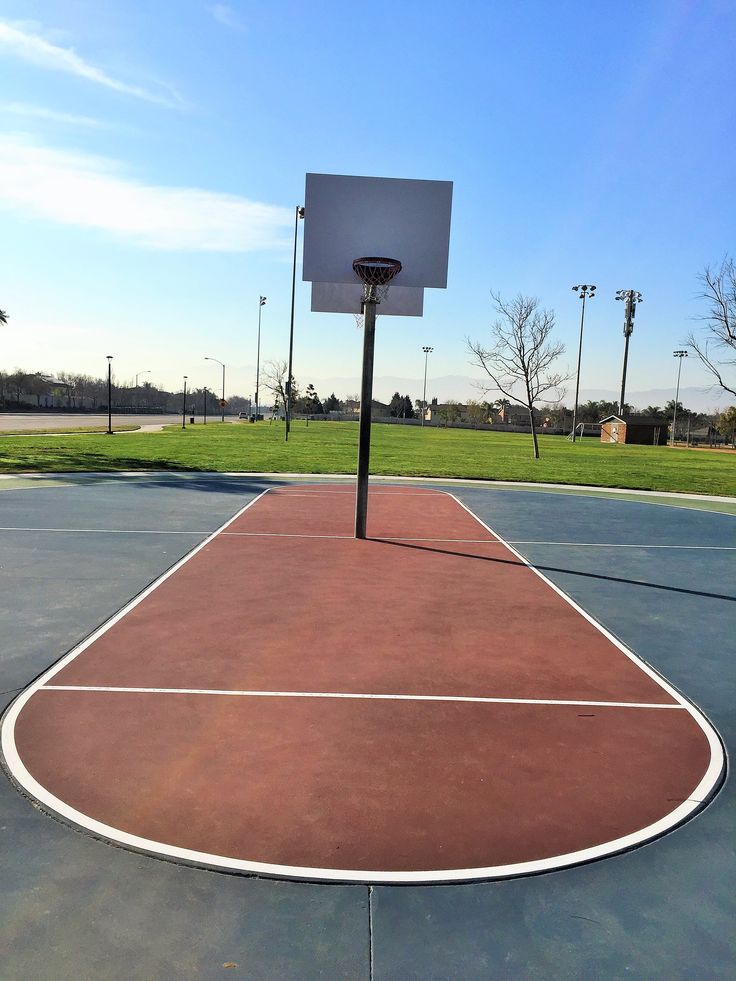
Basketball court markings: standards and norms
Author of the article
Khvatkov Dmitry
Consultant in the production of rubber coatings
Basketball field marking requirements are approved by the FIBA standard. The site must be flat with a hard surface, free of bends, cracks and other obstacles. The accepted dimensions of the field are 28 m long and 16 m wide. By NBA standards, the field is slightly larger: 28.7 m (94' ft) long and 15.3 m (50' ft) wide.
Areas not intended for international competitions may differ from accepted standards (for public use, in schools or universities, etc.) and usually vary from 20 to 28 m in length and from 12 to 16 m in width.
Basketball Court Marking Standards
Basketball court markings are conventionally divided into 5 components:
- Boundary lines. They are located along the perimeter of the site and set its size. The lines that run along the field are called side lines, and those that are behind the baskets are called front lines.
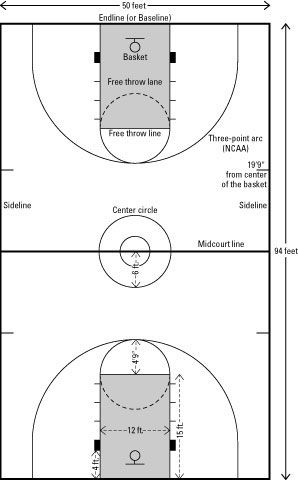
- Central line. Divides the court in half parallel to the front lines.
- Central zone. It is a circle and is placed in the middle of the center line, and, accordingly, in the center of the entire field.
- Three-point line. It is a semi-ellipse and is located around the shields on both sides of the field. It limits the close range.
- Free throw line. It is located in front of the shields parallel to the front line and is limited on the sides by paint lines.
The standard line width is 5 cm. All outlines and lines must be of the same color (usually white) and be clearly visible from anywhere on the court.
Common lines
Common lines are used to limit the playing area of the court. The side lines (along the field) according to FIBA standards should be 28 m long, and the front lines - 16 m. For public areas, deviations from the accepted standards are allowed. Typically, basketball courts in schools or gyms are made from 20 m long and 12 m wide.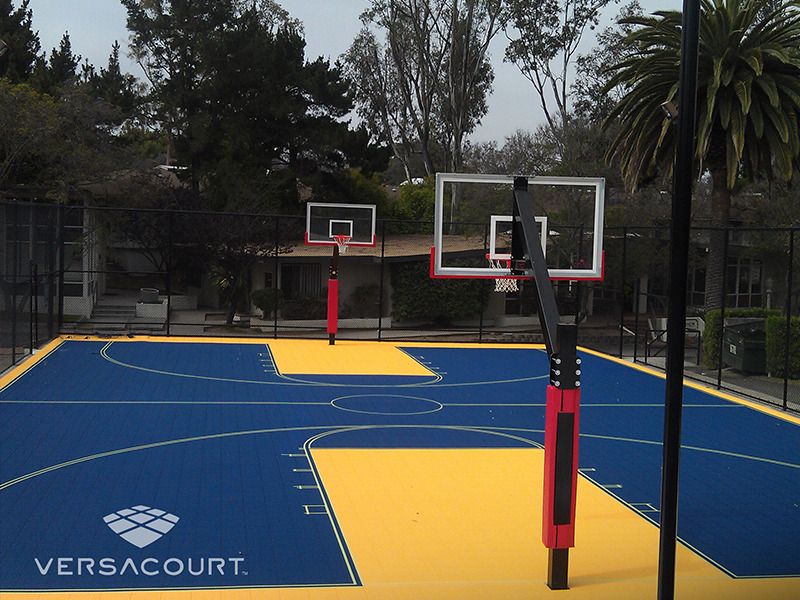
Central lines
The center line is parallel to the front and divides the field exactly in half. According to the standards - it should extend beyond the side lines by 15 cm on both sides.
In the middle of the center line there is a circle with a diameter of 3.6 m, which limits the central zone of the field. In this zone, the ball is played at the beginning of the game.
Three-Point Line
Three-Point Lines are located around the backboards on both sides of the field and consist of two straight lines 2.9 long9 m and a semicircle. Straight lines run perpendicular to the front at a distance of 0.9 m from the side lines. Despite the fact that visually the distance from the ring to the side of the three-point line seems to be less than to its central part, the distance from the backboard to any point is 6.75 m.
Penalty lines
Penalty lines limit the nearest area at the backboard. They consist of a trapezoid and a free throw zone.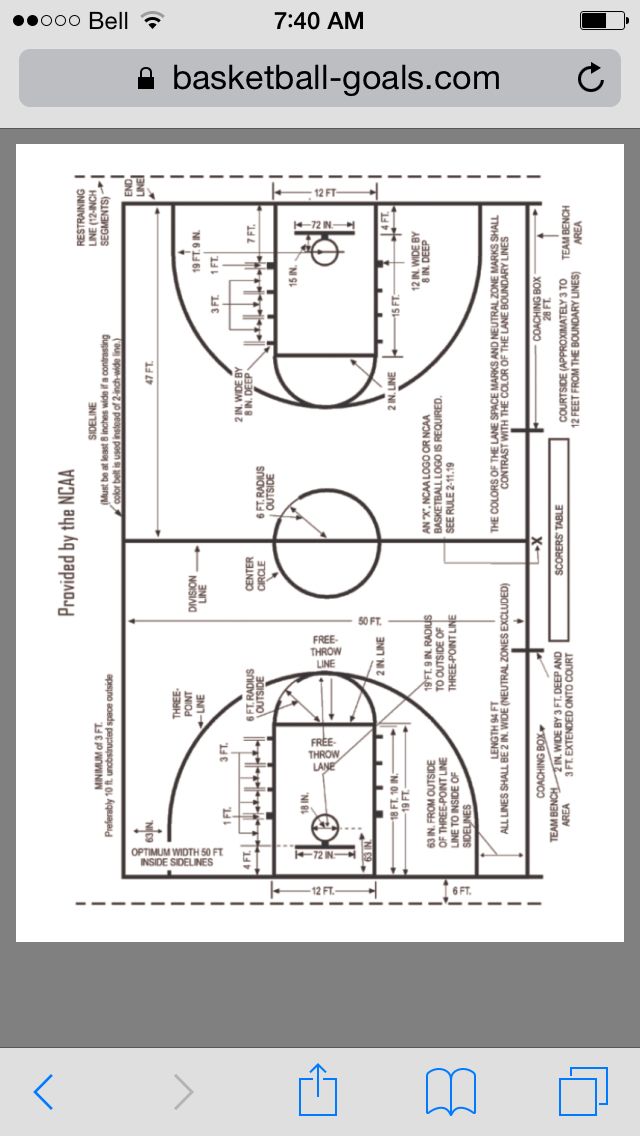
Despite the name, the "trapezium" is a rectangle (until 2009year it really was a trapezoid), which is located under the shield. Its dimensions are 5.8 meters long and 4.9 meters wide. The shield is located at a distance of 1.575 m from the end line in the middle of the site. In front of the backboard, at a distance of 1.25 m, there is a semicircle that limits the area for picking up the ball.
At a distance of 4.225 meters from the backboard, the trapeze zone ends and the free throw zone begins. It is a semicircle with a diameter of 3.6 m (like the central circle).
Paint zone lines
These lines are serifs on both sides of the trapezoid (parallel to the sidelines). They limit the areas for players who are fighting for the ball during a free throw.
Zones on the basketball field
The basketball court is divided into zones using markings. Each zone has its own specific rules.
Center circle
The center circle is used as a separate kick-off area at the start of the game.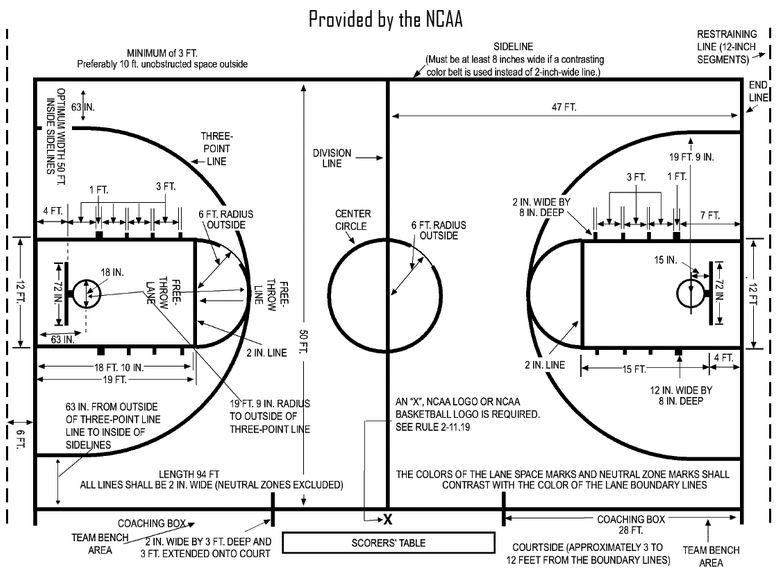 One representative from each team stand in a circle from their side and fight for the ball in a jump, after it is dropped by the referee. All players are exclusively on their side of the field, except for one who rebounds on the opponent's side.
One representative from each team stand in a circle from their side and fight for the ball in a jump, after it is dropped by the referee. All players are exclusively on their side of the field, except for one who rebounds on the opponent's side.
Neutral zone
The peculiarity of this zone is that as soon as the player of the attacking team with the ball crosses the center line and is on the side of the opponent, he cannot pass the ball to the player of his team who is on the other side of the field (i.e. behind center line on your side).
Three-point zone
The three-point line limits the near zone of the shot. Hitting the basket from outside the basket brings the team three points. If the throw was made inside the zone, then it brings two points.
Three-second zone
This is the zone in close proximity to the ring. It is called three-second, since the player of the attacking team cannot be in it for more than three seconds. Most balls are thrown in this zone, so when attacking, it provides maximum protection.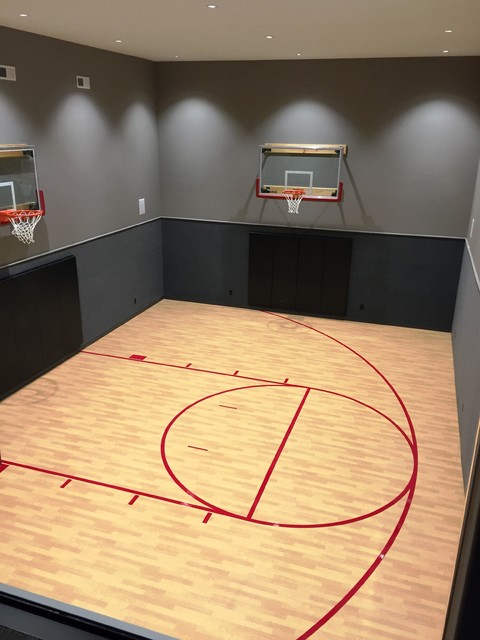
Free throw area
In controversial situations, a free throw is provided from this area. The player of the attacking team must score the ball without stepping over the line of the trapezoid. At the same time, the players of both teams are not in the three-second zone. They take up positions along the paint lines on the sides of the trapezoid and may not step outside the lines until the free throw shooter has shot the ball.
How to mark a basketball field?
Basketball field markings, whether it is an international competition court or an open-air amateur field, are best applied using special equipment. This will ensure the long life of the coating, the lines will not clog and will promote fair play.
You can order the marking of a basketball court in Moscow and the Moscow region from Rezkom. We will measure the premises and develop a design project for the field so that it complies with generally accepted rules and is convenient for operation. For more details, you can contact our manager by phone 8-495-64-24-111.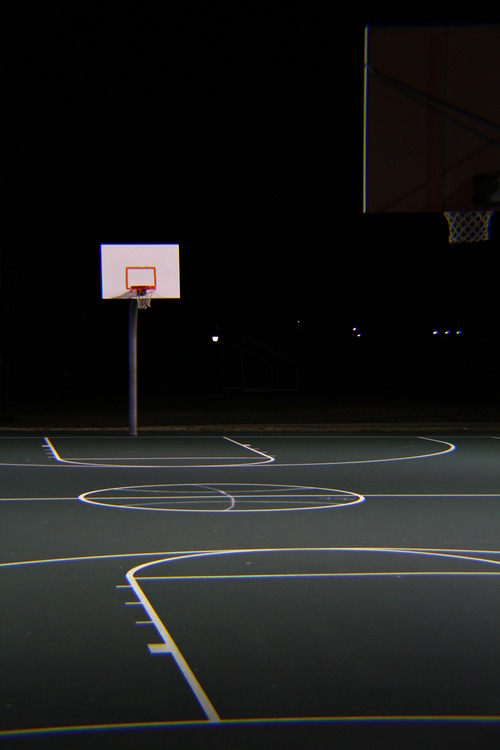
Top 10 NBA Books
10. The Franchise: Building a Winner With Basketball's Bad Boys, the World Champion Detroit Pistons
Author: Cameron Stout are not as hateful assholes as everyone thinks they are.
What this book is really about : About how one of the NBA's most unusual championship teams was created.
Review : “In The Franchise, Cameron Stout details the '88/89 season from training camp to the NBA Finals. He tells how general manager Jack McCloskey built the team over a decade. In the mid-80s, many teams were close to succeeding, but the Pistons actually did it - McCloskey relied on excellent scouting work, was much more willing to trade than others, but at the same time emphasized the need depth of the roster, “chemistry” and dominance of team values when building a champion roster.
The Pistons won the title without a dominant center, without a leader who averaged 20 points per game: thanks to the dedication of defense and teamwork, 9 players at once received enough playing time. Stout breaks down playoff victories over the Celtics, Bucks, Bulls and Lakers, title celebrations and how the expansion draft became a problem for the team's roster depth.
Stout breaks down playoff victories over the Celtics, Bucks, Bulls and Lakers, title celebrations and how the expansion draft became a problem for the team's roster depth.
…
Stout writes not as a novelist but as a sports journalist. He notes the smallest details going on behind the scenes. Lots of phone conversations that may or may not result in exchanges. Decisions made in a state of panic to close the seat of an injured leader. He is very good at talking about the NBA as a coach and general manager: the NBA is not only about superstars, it is also about getting fans in the stands, giving them a show, and using money to build a team whose players complement each other.
Why you should read : Exactly three reasons:
First, The Franchise is a classic of the genre, a book that reveals the whole life from the inside of one of the NBA's most famous championship teams.
Second, because of the approach. The author was with the Pistons throughout the year and did not miss a single detail.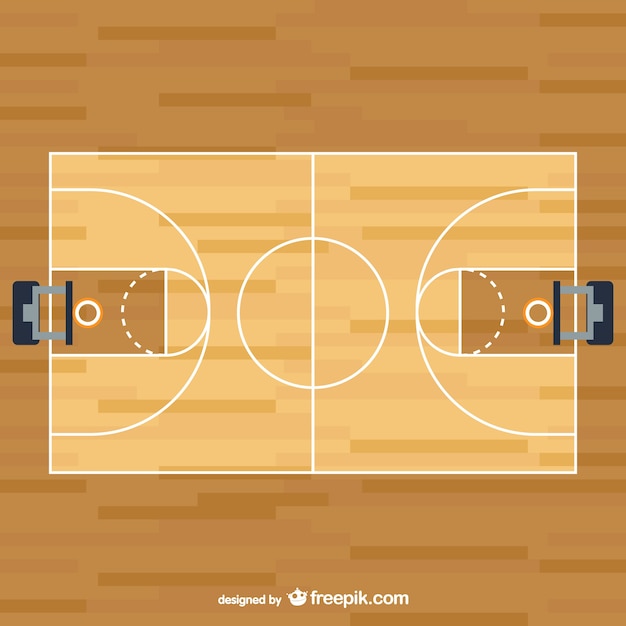 To some, the book will even seem too meticulous, but in general this is a unique opportunity to be behind the scenes. In the history of basketball, such books can be counted on the fingers of one hand.
To some, the book will even seem too meticulous, but in general this is a unique opportunity to be behind the scenes. In the history of basketball, such books can be counted on the fingers of one hand.
Third, because of the people who made up the Pistons. First of all, this is a story about such powerful figures as Isaiah Thomas, Bill Laimbeer, Dennis Rodman, Rick Mahorn and about their relationship within the same team. Then this story about how this unusual team was built: there was not a single superstar here - but there was a miniature point guard leader; no one has ever won a title like this. Finally, this story is about the work of general manager Jack McCloskey, who managed to build the perfect puzzle and discard hundreds of wrong combinations.
The best teams in the NBA. Detroit -89
9. Pistol: The Life of Pete Maravich
Author : Mark Kriegel
Johnson to Magic Johnson.
What this book is really about: About the life tragedy of a successful sportsman
Review : Pistol is a story not only about Pete Maravich, but also about his father Press - they were part of one whole, caught in two bodies. Press was a professional basketball player and later an exceptional coach who boasted of his own success. His help (special exercises for young Pete), along with natural talent and endless training, helped him shine throughout his life.
Press got a job as a coach at LSU on the condition that Pete would strengthen the team along with him. He did not want to go there, but his father was eventually able to convince him.
The plan worked: in the first year the team was on top, and as a result, the university even built a new large basketball arena. At the same time, it was precisely in those years that Press turned from an excellent coach into a coach of an excellent player and began to allow his son to overplay the ball and engage in window dressing.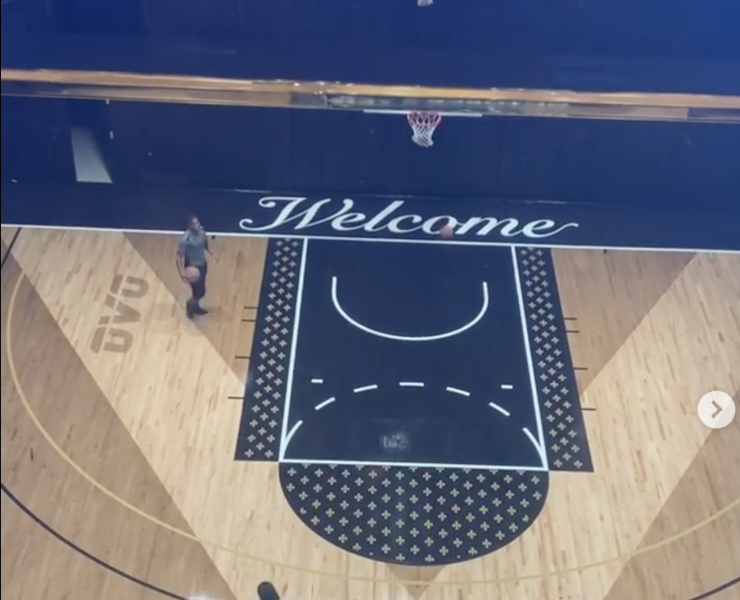 Amid all the hype around Pete, they somehow missed that his mother had problems with alcohol.
Amid all the hype around Pete, they somehow missed that his mother had problems with alcohol.
Pete's career was also not without heavy drinking and occasional injuries. He dropped out of college without a degree when he signed a million-dollar contract with the Hawks. But the first years of his professional career turned out to be unsuccessful: experienced players treated Maravich's "favorite" status with rejection, and his playing style did not appeal to the new head coach (this problem would haunt him throughout his career). As a result, Pete ended up in a new team - New Orleans.
At the same time his mother committed suicide, Press was fired from LSU and then died of cancer. Injuries and drunkenness led to the fact that Maravich eventually decided to end his career, sat down at home and hit religion. He would eventually die on the basketball court at age 40 during a friendly game. The cause of death will be a rare heart disease, and the doctors will wonder how he could play for so long. ”
”
Why you should read: One of the best sports biographies.
The art of inspiring. Artem Panchenko about Pete Maravich
8. Tall Tales: The Glory Years of the NBA .
What this book is really about : That basketball existed in the 50s and 60s.
Review: Professional basketball began in 1954 when Syracuse owner Danny Biason proposed a 24-second time limit for attacking. Mr. Pluto, a journalist for The Akron (Ohio) Beacon Journal, has collected memories of former players, referees, coaches, and owners to create an engaging and informative text about the golden age of the NBA. inevitably, the story focuses on Bill Russell's "Boston" dynasty - and Mr. Pluto even devotes an entire chapter to discussing the rivalry between Russell and Wilt Chamberlain. Now the author, who also wrote Loose Balls, can safely be called Boswell from basketball.
Why read : To understand that it was no more boring then than it is now.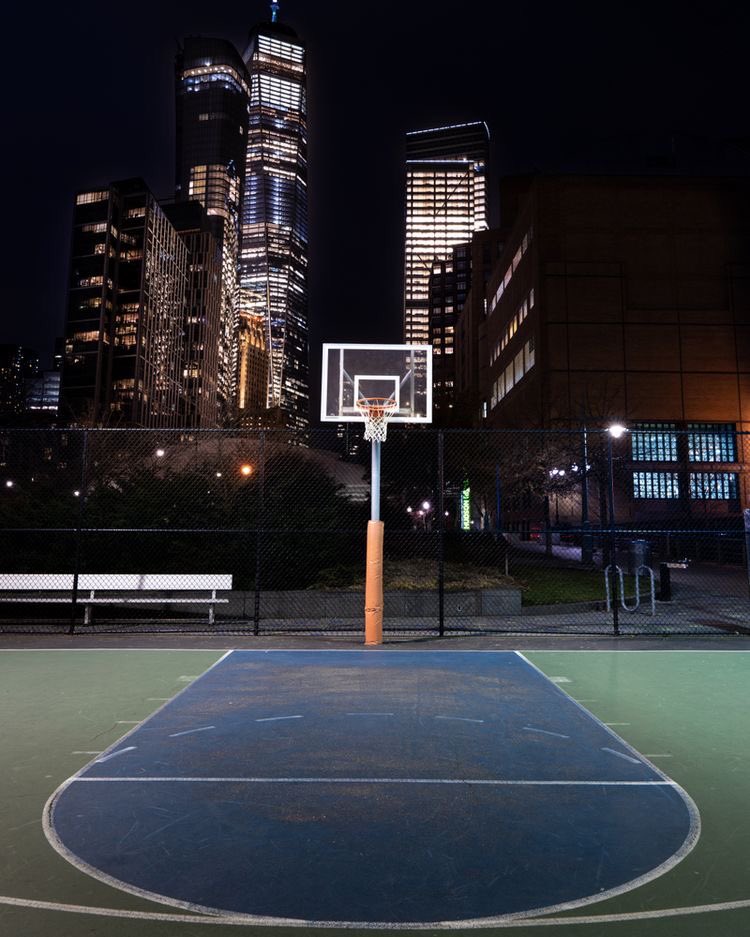
7. Dream Team: How Michael, Magic, Larry, Charles, and the Greatest Team of All Time Conquered the World and Changed the Game of Basketball Forever this book is like : About the dream team that changed basketball forever.
What this book is really about: How the league went from Larry Bird and Magic Johnson to Michael Jordan.
Review : “The book tells about important events in the life of the national team, for example, thoroughly analyzes the famous training match in Monte Carlo, during which the best players in the world got excited and began to count fouls themselves after a frightened Italian referee swallowed a whistle .
But, in my opinion, the most juicy details can be found in short digressions and in those moments when McCallum talks about the relationship between the team's players then and now. Almost all of them (with the exception of the always delicate John Stockton) are very critical of each other and try to highlight all the shortcomings.
In what other company can David Robinson, a two-time NBA champion who has meticulously worked on his game, look uncomposed?
For his part, the incredibly religious Robinson, after the NBA engaged in educational activities, considers Jordan an absolute psychopath who does not understand the main values of life.
McCollum also includes minor characters. For example, Clyde Drexler, who got into the team when the first 10 players were chosen, criticizes the Magic, saying that the level of play was clearly not up to the main team of the world.
It is these moments that complicate the characters of the legends. At the same time, McCollum sympathizes with each of them, even the completely impenetrable Michael Jordan. The author manages through funny stories and digressions to create a more human image of the dream team and at the same time not belittle their image at all. Almost all of them (with the exception of Karl Malone) turn out to be quite cute with him.
Why you should read : For an atmosphere that makes you feel like you're in the company of the biggest basketball legends for 300+ pages.
White and black. Stockton and Thomas in the fight for a place in the Dream Team
20 facts about the Dream Team that you did not know
10 funny stories about the Dream Team
Through the mouth of Byrd. The epilogue of the book “Dream Team” by Jack McCallum
6. When The Game Was Ours
Author : Jackie McMullen
What is this book about : On the Fatfall of Larry Berda and Madjik Johnson.
What this book is really about : Why Larry Bird and Magic Johnson saved the NBA.
Review: “The thirst for victory that drives each of them is revealed at the very beginning, and it is because of it that they waited for 20 years after their last meeting in the finals (1987) to talk about their feelings towards each other.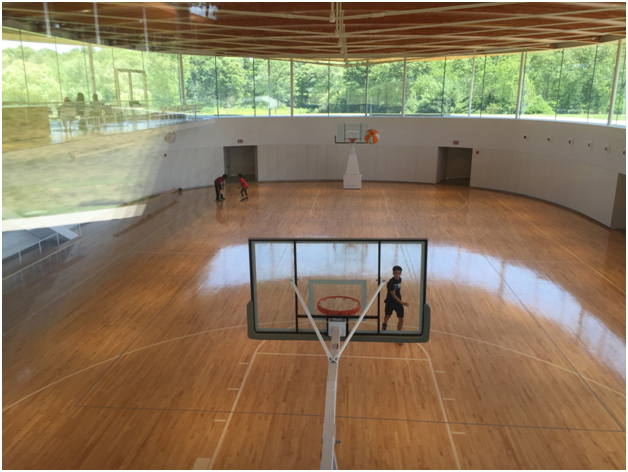 to friend. “I never said that in the course of my playing career I only thought about Johnson,” Byrd admits on the front page. - I couldn't talk about it. But as soon as we agreed to write this book, I realized that the time had finally come to explain to people how this person motivated me ... What exists between me and Magic cannot even be called a brotherly relationship.
to friend. “I never said that in the course of my playing career I only thought about Johnson,” Byrd admits on the front page. - I couldn't talk about it. But as soon as we agreed to write this book, I realized that the time had finally come to explain to people how this person motivated me ... What exists between me and Magic cannot even be called a brotherly relationship.
For most of the story, Bird and Magic watch each other from a distance, their chance encounters on and off the court are marked by only sparing remarks, and they are driven by a manic obsession with each other. It's so big that when Bird's Celtics beat the Lakers to take the title in '84, all Bird could say was, "I finally got him. Finally, I got Magic." Surprisingly, their first conversation (which took place in the basement of Bird's house after filming an advertisement in '85) takes place only on page 176 (which is two-thirds of the book) and is the culmination of the plot development - they become friends and gradually realize that there is much more between them.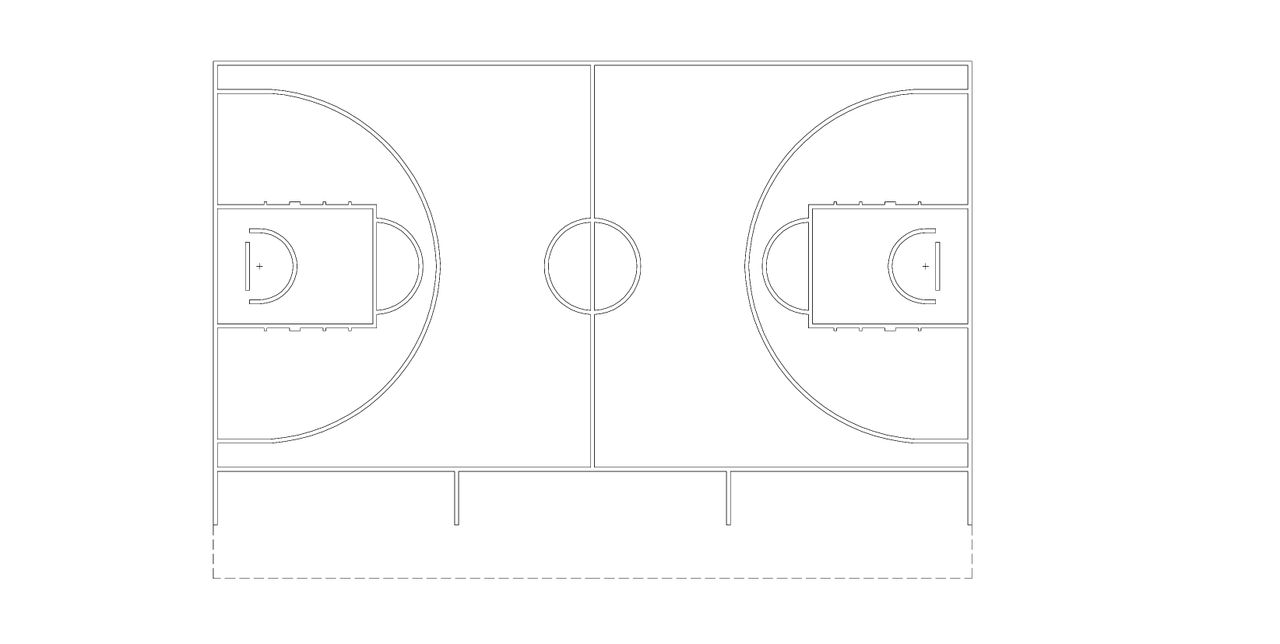 more in common. The bond between them becomes so close that Byrd compares his feelings when he learns of Johnson's diagnosis at 91st, with the suicide of his father. The dynamic of the relationship between the characters is so strong that it does not allow the book to deviate from the main line even when McMullen departs from it, talking about the rivalry between the Celtics and the Lakers or about the life path of each of them.
more in common. The bond between them becomes so close that Byrd compares his feelings when he learns of Johnson's diagnosis at 91st, with the suicide of his father. The dynamic of the relationship between the characters is so strong that it does not allow the book to deviate from the main line even when McMullen departs from it, talking about the rivalry between the Celtics and the Lakers or about the life path of each of them.
But McMullen keeps those digressions to a minimum and soon returns to the mainstream, that is, not even to what was happening on the set, but to what was going on in the minds of both superstars.”
Why read : If ever the two main superheroes of the era, fueling themselves by confrontation with each other and leaving behind a whole decade, get together to talk about their relationship, you will definitely whistle me.
The history of all final series between the Lakers and Boston
5. Playing for Keeps
What this book is supposed to be about : About Michael Jordan.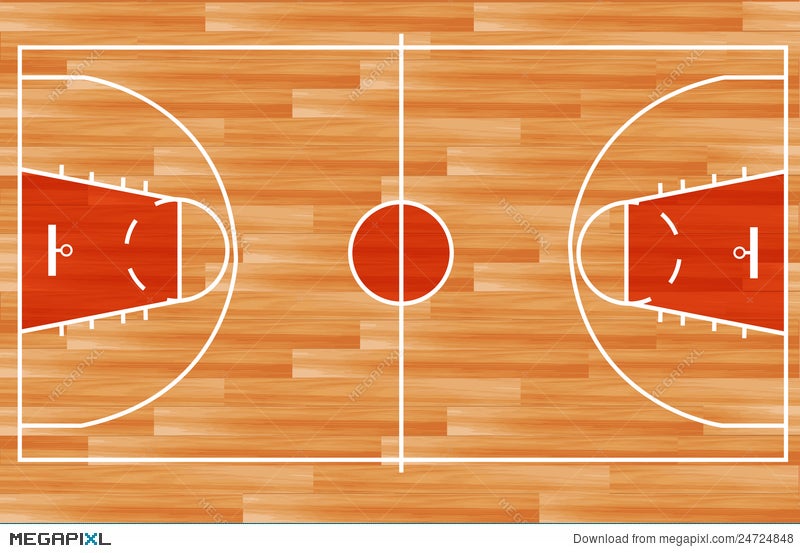
What this book is really about: No doubt about it. This is a book about Michael Jordan.
Review: “One of the best writers writes about the greatest player of all time, trying to best describe Jordan himself and understand what he personally did for our society. Most of these books end up as describing MJ as a regular celebrity. There is nothing of the kind here. Shows all of Jordan's changes throughout his career, taking into account all the details. The story ends with the last Bulls title won at 98th.
This is the most honest book ever written about Jordan. Although the author is often ironic about Michael's dismissive attitude towards teammates, he pays a lot of attention to how focused Jordan was and how wise in making business decisions. However, I cannot call this book the best, since Jordan did not participate in its writing. According to Halberstam, he was promised two interviews, but they never happened. But that's the only downside. "
"
Why you should read : Everything you need to know about the best player in basketball history in one place.
4. The Book of Basketball
Author : Bill Simmons
What this book is supposedly about : About Rick Barry wearing a wig.
What this book is really about : In terms of the book's structure, Mr. Simmons offers a short (for him) history of the league. It then "fixes" any bugs related to the MVP awards. Then he outlines the new and improved Basketball Hall of Fame to the smallest detail and introduces 96 players worthy of this honor. It then highlights the top 20 teams in history. Finally, he builds the perfect team to face the Martians in the battle for Earth's future with Magic Johnson in 1985, Michael Jordan in 1992 and Tim Duncan in 2003."
Review : “If you think The Book of Basketball is testosterone-infused, it is.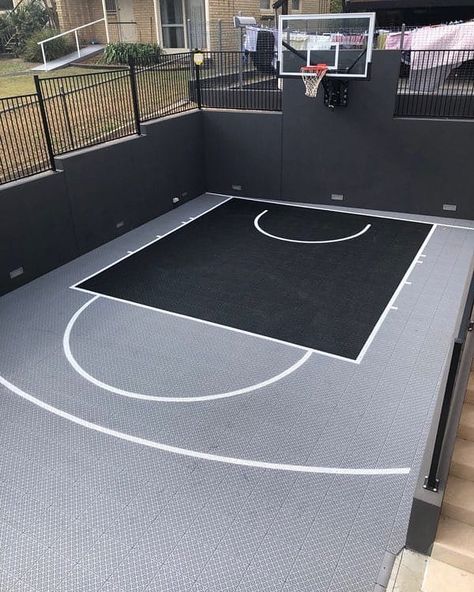 The creation of Mr. Simmons would be quite interesting, and if he did not inflict mean blows on the women's NBA and, unfortunately, on his own wife. He recalls watching Michael Jordan smoking a cigar and playing cards and was suddenly taken aback when his then-wife showed up. Simmons then said to his friend: "Look, he's just like the rest of us." He then calls Jordan "an ordinary guy who is kept in check by his wife. For the first time in my life, I didn't want to be Mike." In a paragraph about 1970s shooting guard Gale Goodrich, there's bound to be room for a joke about Mr. Goodrich having a female name. Simmons is also quite free with statistics. Then he argues that statistical calculations cannot say anything about how important certain players were to their teams (in connection with Bill Russell). To explains that for some players, the numbers were more important than the success of the team (in connection with Allen Iverson).
The creation of Mr. Simmons would be quite interesting, and if he did not inflict mean blows on the women's NBA and, unfortunately, on his own wife. He recalls watching Michael Jordan smoking a cigar and playing cards and was suddenly taken aback when his then-wife showed up. Simmons then said to his friend: "Look, he's just like the rest of us." He then calls Jordan "an ordinary guy who is kept in check by his wife. For the first time in my life, I didn't want to be Mike." In a paragraph about 1970s shooting guard Gale Goodrich, there's bound to be room for a joke about Mr. Goodrich having a female name. Simmons is also quite free with statistics. Then he argues that statistical calculations cannot say anything about how important certain players were to their teams (in connection with Bill Russell). To explains that for some players, the numbers were more important than the success of the team (in connection with Allen Iverson).
Although Simmons is trying his best to shake off the label of "hard-core cheerleader," he hasn't succeeded. He puts Dennis Johnson ahead of Dwyane Wade, although he also puts the latter on the team that should play the Martians. His pro-Boston arguments are more solid on other occasions, such as when he argues that Bill Russell had a more successful career than Wilt Chamberlain.
He puts Dennis Johnson ahead of Dwyane Wade, although he also puts the latter on the team that should play the Martians. His pro-Boston arguments are more solid on other occasions, such as when he argues that Bill Russell had a more successful career than Wilt Chamberlain.
Mr. Simmons might not settle every basketball dispute - who could? - but it makes up for this failure with a bunch of jokes and attention to detail. Plus, he produced enough provocative arguments to add fire to the fans' controversy in the future."
…
“Simmons wouldn't be Simmons if he refrained from pointless passages. One of his biggest problems is that he's constantly trying to be funny: he'd be twice as funny - and certainly not as annoying - if he could restrain himself and keep half of the jokes to himself. Simmons is definitely turned on by the mixture of sex and sports. Three pages after the analogy between Moses Malone and Marilyn Chambers, he writes that Shaquille O'Neal is like porn star Peter North, "dominant but not the best.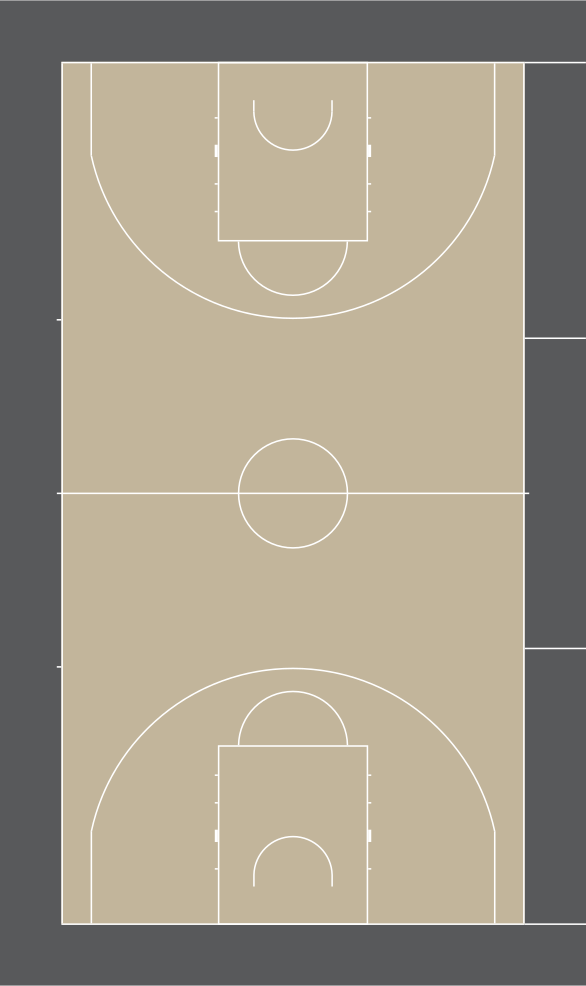 " He compares Karl Malone to "an Asian stripper with fake boobs" and Jason Kidd to "a gorgeous girl... with the smallest breast size."
" He compares Karl Malone to "an Asian stripper with fake boobs" and Jason Kidd to "a gorgeous girl... with the smallest breast size."
It's not exactly jarring on teenage humor, but the amount of below the belt jokes that are completely unmotivated by the subject of discussion shows that the author is intoxicated with the freedom that he lacks when working on a sports site. After all, all the jokes about boobs and strippers only create a negative impression on Simmons' audience - it seems that these are the guys who mainly interact with the female sex when they turn on pornography videos after the Utah-Atlanta game.
Why read : Because it's Bill Simmons. The man who essentially created (well, or helped formulate) the modern mythology of the NBA. Details and nuances in it are not as important as the overall canvas - who occupies what place in the pyramid of greatness.
Translations from Basketball Book on Sport and Philosophy Blog
3.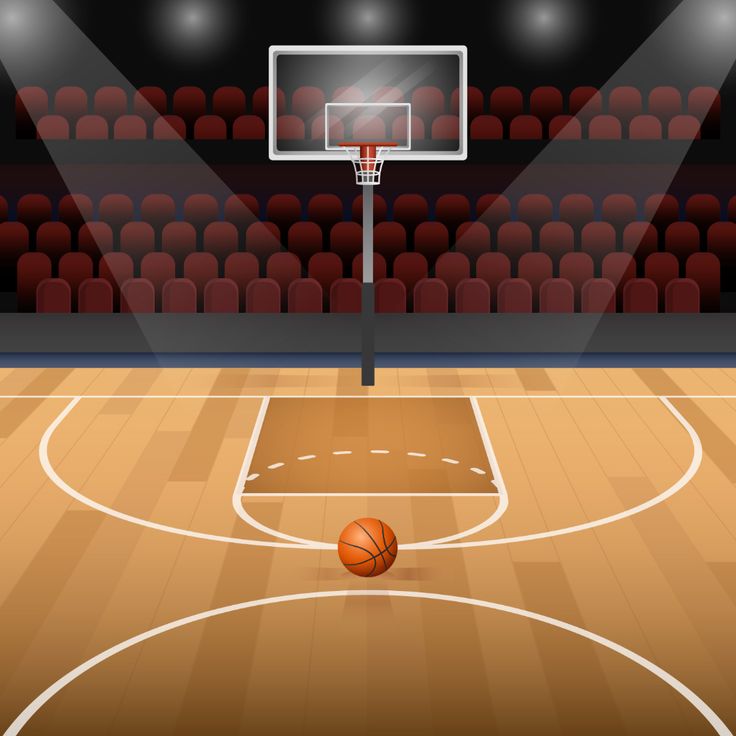 Loose Balls
Loose Balls
Author: Terry Pluto
What is this book as if : how Marvin Barnes missed his plane, then drunk ran to the very beginning, took off his coat, under which he was wearing a game uniform, ate fried wings in the locker room, went out on the court and scored under 40 points.
What this book is really about : The most complete history of the ABA, told by participants and eyewitnesses of this most ridiculous basketball attraction.
Review : “Loose Balls readers will quickly change their minds about the NBA. Focusing on individuals rather than players, the emotion of a dunk or a 3-pointer at the end, these are all things that start with the ABA. You will quickly recognize the features of modern basketball that began to develop from here.
The American Basketball Association was, of course, American in essence. Entrepreneurial spirit and unique creativity reigned here - the ABA evoked all the best aspects of American innovation, even if it was done by accident.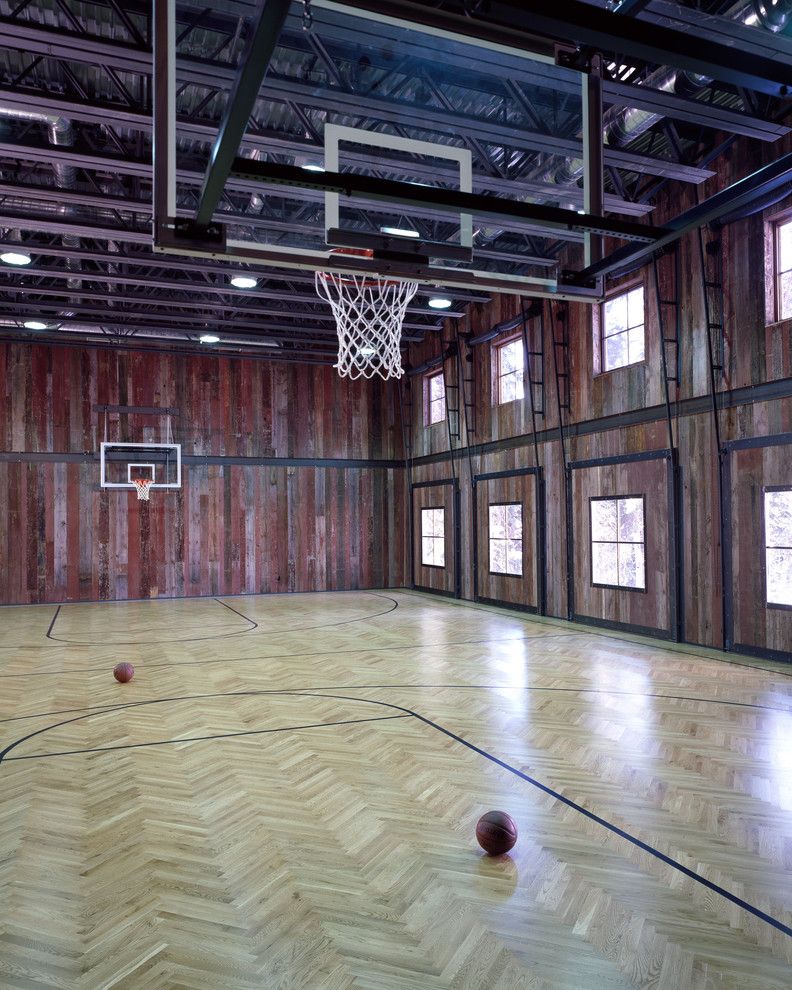 Loose Balls ties these happy accidents together and tells a league story that shouldn't have happened, from the perspective of players who otherwise would never have been remembered."
Loose Balls ties these happy accidents together and tells a league story that shouldn't have happened, from the perspective of players who otherwise would never have been remembered."
Why you should read:
First, because this is the funniest book about basketball.
Secondly, because it describes the origin of the most attractive tricks for fans. These innovations did not save the ABA, but they turned out to be integral components of modern NBA basketball.
This book should be a reference for any basketball functionary. For it explains the difference between an official who believes that everything is bad, and therefore there is no need to worry, and an entrepreneur who himself goes to dance in front of an audience, only to have three more people come to his team.
Thirdly, Loose Balls is hundreds of cool stories about stars like Julius Irving, Connie Hawkins and David Thompson, as well as legendary characters like Warren Jabali, John Brisker and Wendell Ladner.
2. Jordan Rules
Author : Sam Smith
What this book seems to be about : About how everyone hated Jerry Krause.
What this book is really about : About the birth of one of the best teams in basketball history and its phenomenal leader.
Review: “When you read the Jordan Rules now, you do not understand the main thing: things that can be called negative about Jordan are no longer surprising. It is now generally accepted that 1) Jordan is the greatest basketball player in history and possibly the greatest athlete; 2) He was a rare asshole. These facts are not mutually exclusive.
In the center, of course, is Jordan, who has taken the NBA and basketball to previously unattainable heights. Jordan wasn't close to his partners, not even Scotty Pippen (who was close friends with Horace Grant) and complained about them most of the time because he thought they weren't good enough to help him win the title. He humiliated them, told them not to interfere with him, wouldn't give the ball to teammates he didn't like, and even beat Will Perdue in practice. Plus he hated Phil Jackson's triangular attack. But Jordan's thirst for victory was incomparable even with his incredible talent, although I was surprised to find that he only started working out in the gym at 1990th and at the same time loved fast food.
He humiliated them, told them not to interfere with him, wouldn't give the ball to teammates he didn't like, and even beat Will Perdue in practice. Plus he hated Phil Jackson's triangular attack. But Jordan's thirst for victory was incomparable even with his incredible talent, although I was surprised to find that he only started working out in the gym at 1990th and at the same time loved fast food.
I don't think Smith was trying to portray Jordan negatively. He clearly admires Jordan's talents on the court, although he does not understand why he requires special treatment. Despite his basketball merits, Jordan is far from ideal, but he always tried to create just such an image for himself. He always sought to get away from the attention of the press and was tired of being too meticulous about himself.
Jordan is at the center of the story, but the rest of the team gets plenty of attention as well. Almost everyone in the line-up shows their doubts about contracts, and about playing time and the number of shots.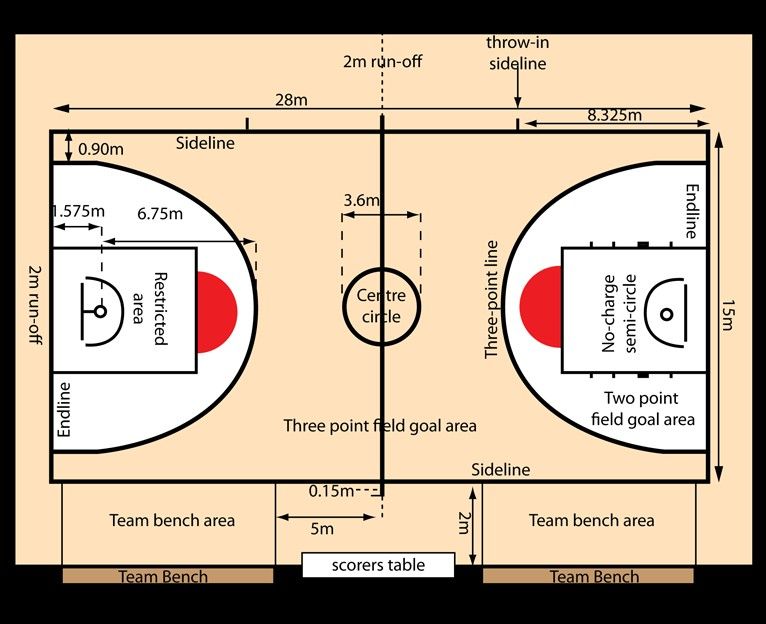 They look at Jordan with a mixture of admiration, resentment, envy and anger, but they can't help but admit that he's the greatest they've ever played with."
They look at Jordan with a mixture of admiration, resentment, envy and anger, but they can't help but admit that he's the greatest they've ever played with."
Why you should read : Jordan Rules is a book that is deeply connected to the history of the league. Even Phil Jackson admitted that to some extent it was she who helped the Bulls build a dynasty - after the release of Smith's work, Jordan tried to improve relations with partners and trust them more.
Immediately after its release, the players tried to show that everything that was displayed there was not true. As Stacey King said: “This is one of the best fairy tales since Mother Goose. Just bullshit." But time put everything in its place. Both direct confessions at the end of a career and circumstantial evidence suggest that a lot, if not all, of the life of the Bulls in season 90/91 is captured very accurately: Smith built the text on conversations with the team's players, which made it possible to achieve the effect of maximum immersion in the life of the bulls and the problems that they had to overcome.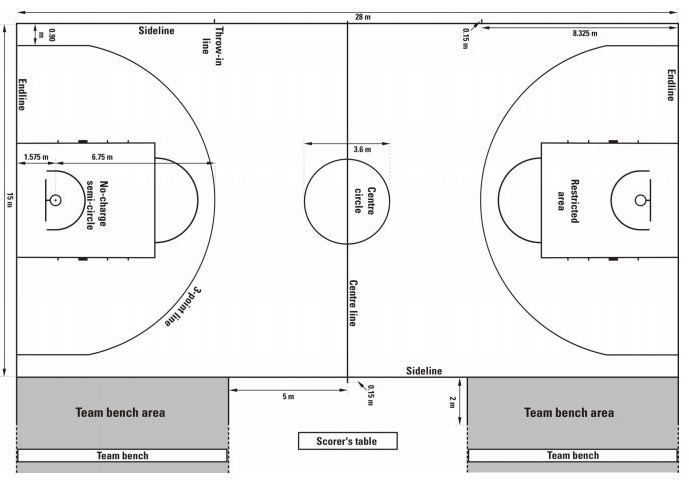
It is clear that the two things that made Smith's book a bestseller in 1992 are no longer clear to us. First, the dark side of Jordan, fueling himself by confrontation with the rest, is already more or less familiar to everyone and is not a revelation. Secondly, modern coverage of basketball 24 hours a day, 7 days a week, which allows you to study the smallest details in the life of the team and players, makes it difficult to understand that this was far from always the case. It was with the Jordan Rules that a fundamentally different coverage of basketball began and the transformation of the NBA into a huge reality show.
The best teams in the NBA. Chicago-91
1. The Breaks of the Game
Author of : David Haebelstram
What this book is about, as it were, the champions , and then, no less surprisingly, fell apart.
What this book is really about: How the NBA became one of the major American leagues.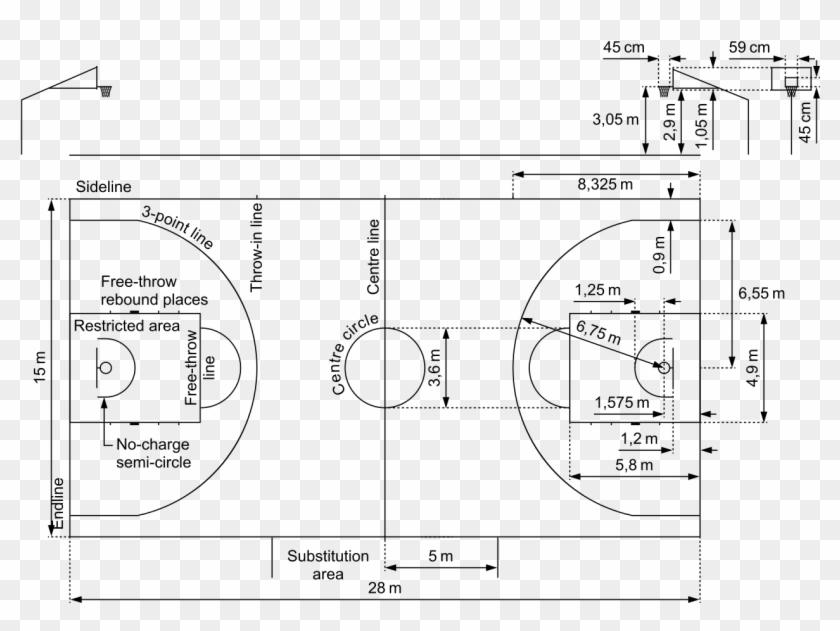
Review : “Most importantly, I didn't understand how to write. As a child, I wrote stories, read every book I could find, and beat the entire Hardy Brothers series before I was ten. But I didn't know how to write. "The Breaks of the Game" is the first "adult" book that I fell in love with. Within a few pages, I realized that he had written it especially for me. I devoured it in one weekend and re-read it a few months later. In the end, I read it so many times that it fell apart and I had to buy a hardcover book.
After high school and university, I still couldn't decide on a career path. And every year I reread this book to remind myself of how to write - how to choose words, how to construct sentences, how to tell about someone's life without resorting to quotes, how to tell stories in such a way that their characters revived. It was my personal seminar on the author's craft. When the hardcover was tragically damaged in an unexpected accident on the beach, I bought another book from a second-hand bookstore on Newbury Street.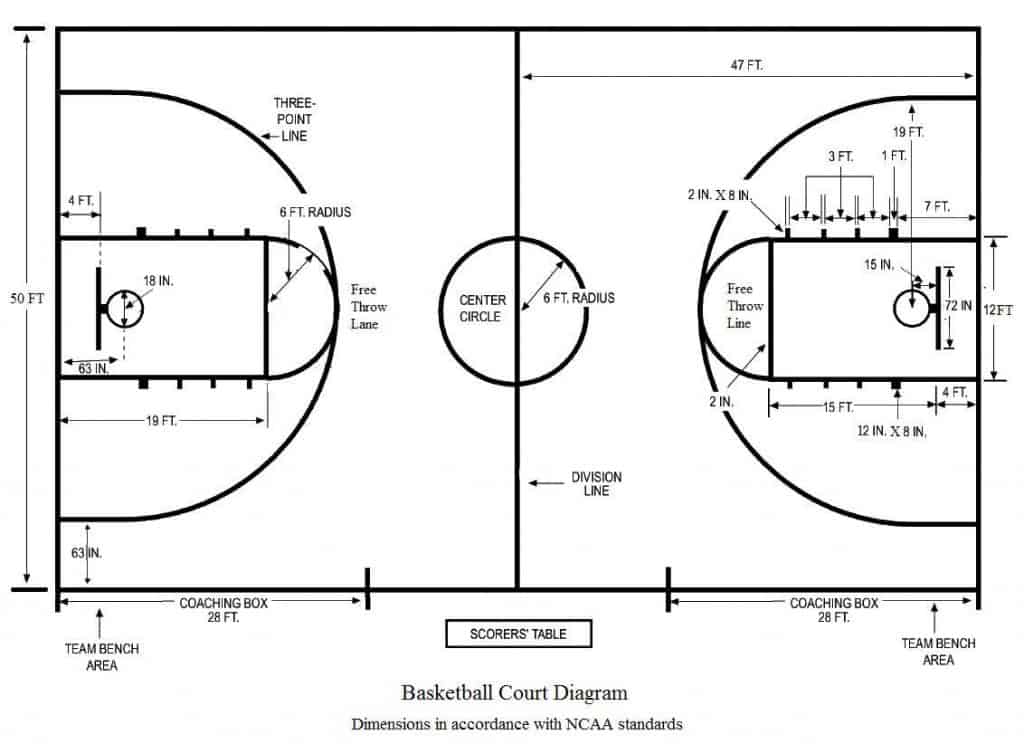 I paid $5.95 and it was the best purchase of my life. I re-read it every two years to make sure I haven't forgotten anything. Like a golfer going back to an old instructor to correct his shot." (Bill Simmons)
I paid $5.95 and it was the best purchase of my life. I re-read it every two years to make sure I haven't forgotten anything. Like a golfer going back to an old instructor to correct his shot." (Bill Simmons)
Why You Should Read : Bill Simmons's review of his ongoing love for the book and the impact on his life and career is especially amusing when you consider that purists find two flaws in Halberstam's work: The Breaks of the Game has been criticized for being too long and lacking any structure. (In general, Simmons is a bright student.)
Why then is it considered the best basketball book of all time? Because style and structure are absolutely secondary. Halberstam spent one of the biggest seasons in NBA history (1979-80) with the Blazers and caught every major trend in the league. The narrative is almost chaotic and consists of one chapter, during which the author jumps from one subject to another and does not help the reader to restore the chronology of the event and the factual outline.